Not your usual brewery, this M’sian couple’s biz makes non-alcoholic beers & wines for dogs

“As paw parents ourselves, Herbie and I enjoy fine food and wine so we just wanted Skippy (their Golden Retriever) to experience the life we live,” Stephanie Chan shared.
Every year, the couple would plan Skippy’s birthday in advance and invite her dog pals to the house for a party. Each celebration would be better than the last and they would always make sure that her birthday cake is the star of the menu.
But during Skippy’s 6th birthday, Stephanie had another idea. With her trip to Bordeaux, France to visit a wine chateaux coming up, she felt inspired to serve wine to Skippy too.

After a quick web search, she found out how common dog beer, wine, and champagne are in the US. So she made her own batch for the party, and caught all of her friends’ attention.
“They were fascinated as to how cute the wine was and asked why not I produce this and sell it? We (Stephanie and Herbie) thought it’s not a bad idea and we launched Pawsome Brewery in November 2023.”
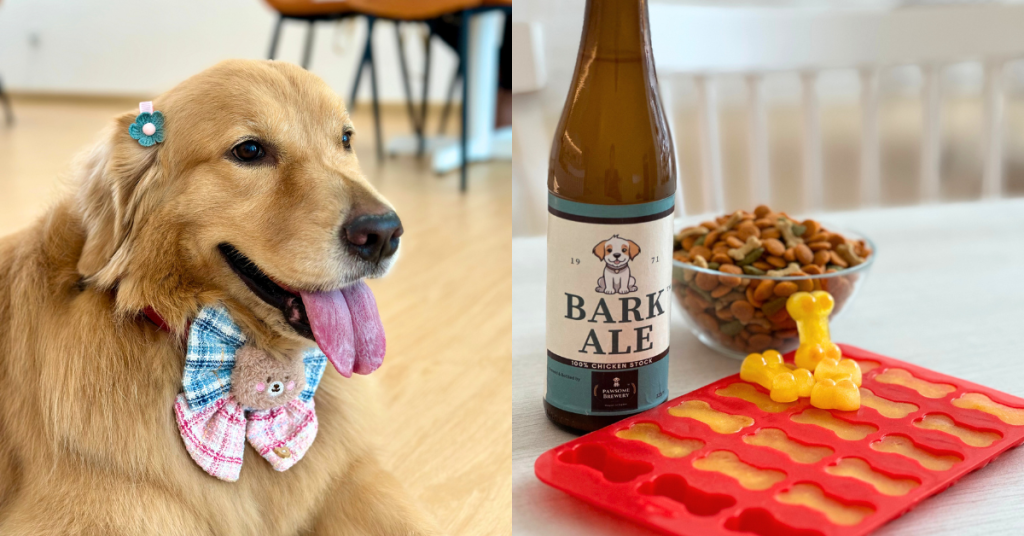
Taking ins-paw from her own life
Hearing this, you might think that it’s quite an impulsive decision. After all, catering to the diets of animals can be challenging as not everything humans eat is safe for them to consume.
But Stephanie is actually the founder of another pet-friendly venture. Located in Puchong, WBO at The Cube is a dog-friendly alfresco dining restaurant.
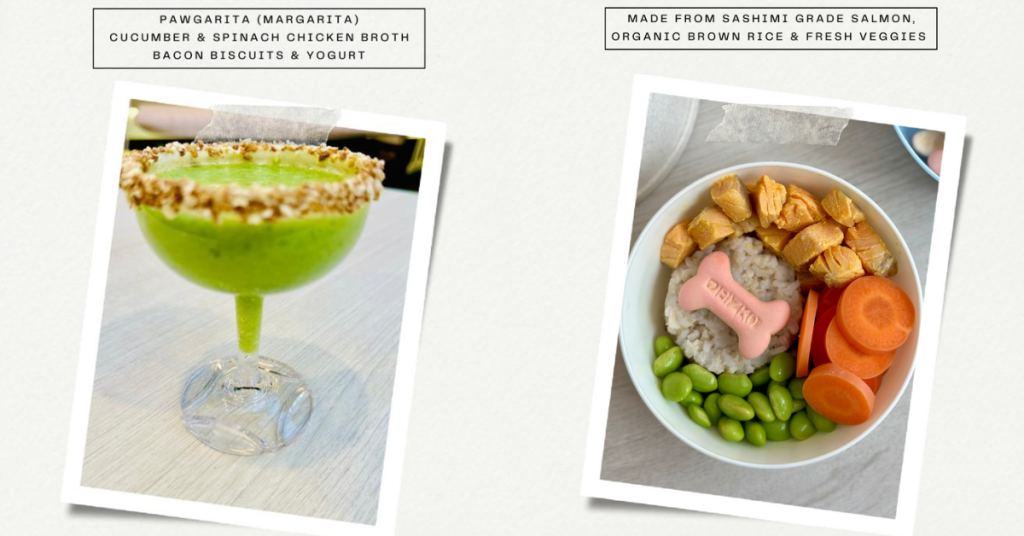
Not only can you bring your dogs along, but the eatery also offers an F&B menu for your furry friends. Whether that’s food from their BARKITCHEN, drinks from their BARKRISTA, or even a bar menu from their BARK BAR.
For example, the restaurant offers treats like:
- Hot Dogolate, hot chocolate that’s not really chocolate
- Dotcha Latte, matcha latte made from cucumber yoghurt
- Pawgarita, margarita made from cucumber and spinach chicken broth with bacon biscuits and yoghurt
So this isn’t Stephanie’s first time dabbling in homemade food and drinks for pets.
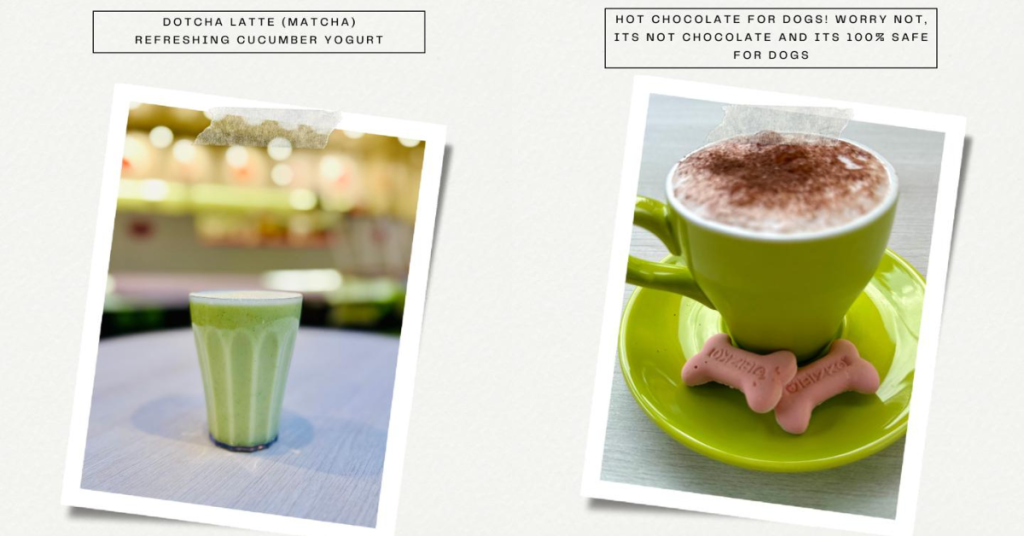
Not messing around with her furbaby’s health
Now, although they’re called beer, wine, and champagne, none of Pawsome Brewery’s products actually contain alcohol. This is because alcohol is toxic to dogs and most pets.
In lieu of that, the brand mainly uses meat (either chicken or fish), vegetables, fruits, herbs, filtered water, and turmeric for their beverage concoctions. The founder also clarified that they don’t use any seasoning, artificial colouring, or carbonation.
Each bottle is made in-house by Stephanie and her team from scratch using fresh ingredients from the same suppliers as WBO at The Cube. And throughout the process, she takes extra precautions to ensure that it’s safe to consume.
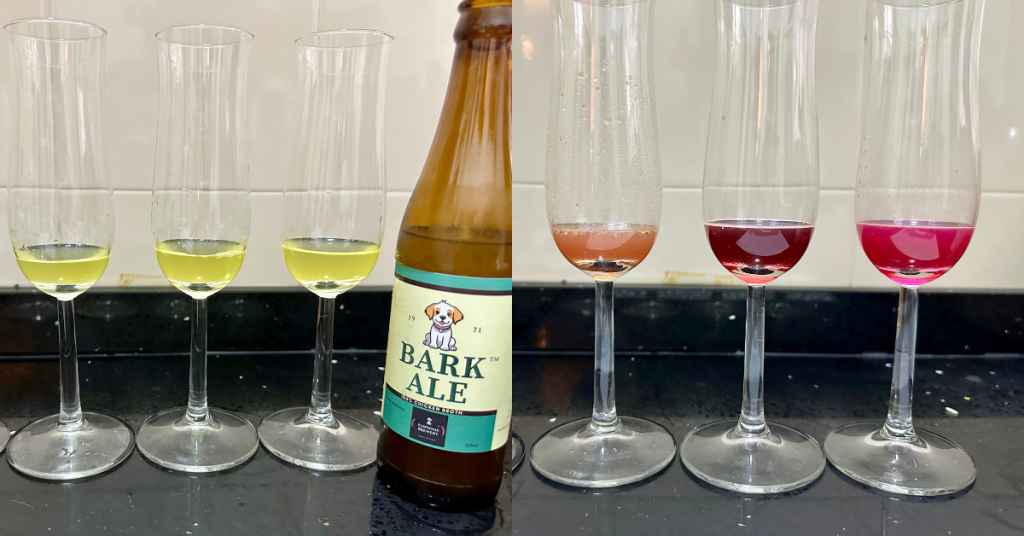
Before starting, every single bottle and its caps are sterilised. The vegetables and fruits are cleansed with food-safe washing liquid, while the meat gets a hot water bath before they’re boiled.
Depending on whether they’re using fish or chicken, it takes around three to five hours of simmering. Once cooled, the bottling process begins immediately. This is to reduce the chances of bacteria contaminating the drinks.
“After capping, we will put it right away into the chiller at around 3°C,” Stephanie shared.
As the French say, “bone” appétit!
Considering its ingredients, the brand actually promotes Pawsome Brewery’s offerings as pet supplements, despite the branding.
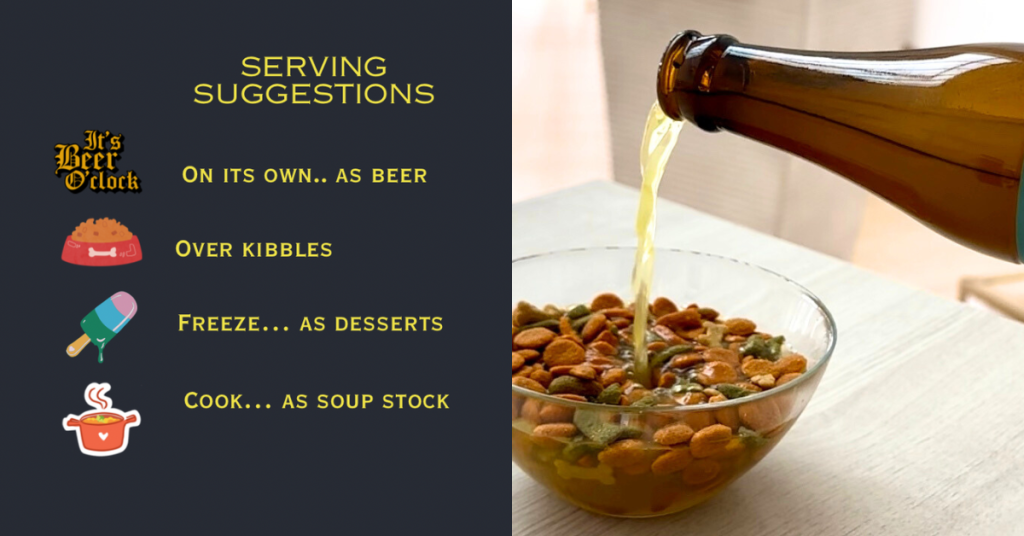
“Our products help to improve their digestive systems, have vitamin C, [and] anti-inflammatory properties. [It] can also be used to soften kibbles for senior dogs and for dogs who drink less water to help hydrate them,” the restaurateur explained.
Some repeat customers have also shared that their dogs poop more easily and more often after consuming the brand’s beverages.
Currently, Pawsome Brewery has three products:
- Barkale (RM18), which is dog beer made of chicken broth with turmeric
- Malbark (RM21), which is red wine for dogs made of chicken broth with fruits
- Dog Perignon (RM18), which is champagne for dogs made of fish broth with fruits
They each come in 325ml bottles and contain no preservatives. With that in mind, the shelf life is only three weeks and it has to be refrigerated. However, the brand recommends consuming the drinks within two days once opened.
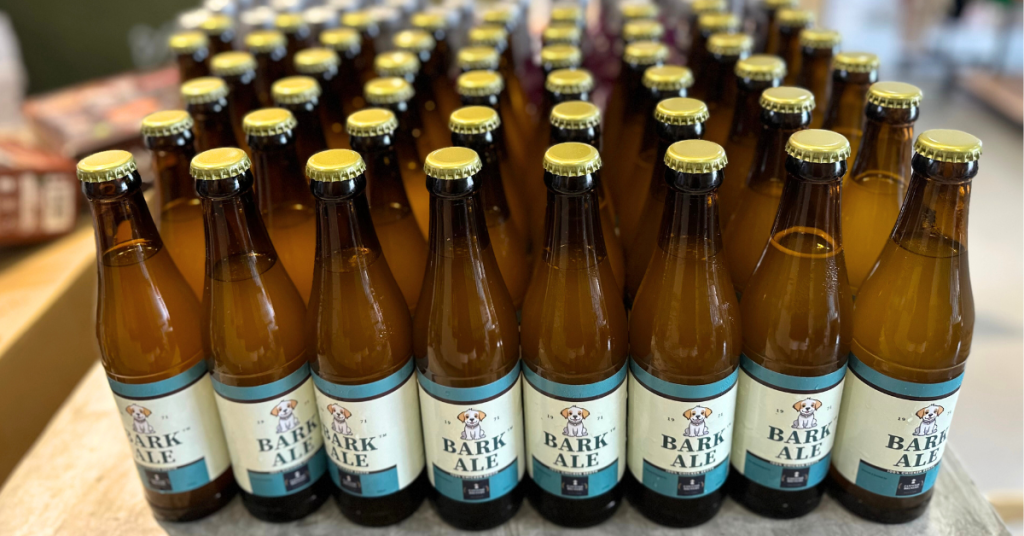
“We also suggest customers to transfer into ice cube trays and freeze them if they want to keep. [They will last] up to three months,” Stephanie added.
Staying mindful of their dietary restrictions
Now, being a paw parent myself, I understand the worry of feeding your pets the wrong thing. This is something that Stephanie and Herbie resonate with too.
Although the products aren’t certified by veterinary bodies, the brand avoids using preserved or unusual products that are harmful to animals. Some examples of this include grapes, chocolates, and onions.
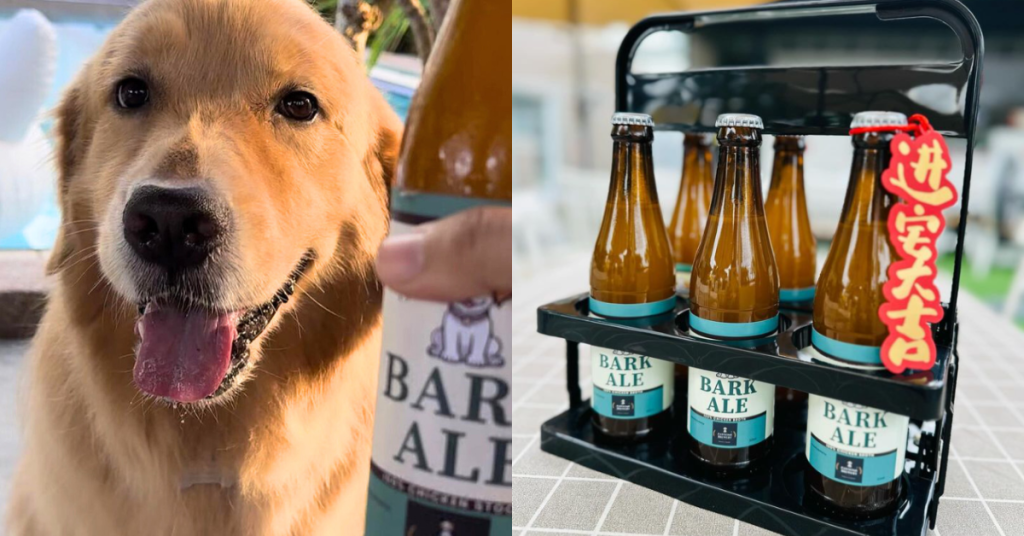
“As a dog parent myself, I learnt about what is safe or not for my own [fur] kid, so I will not put anything that is not safe for other fur friends,” Stephanie stated.
“I am [also] totally aware of allergies, as I am heavily allergic to peanuts and getting into anaphylactic shock is no joke, so I don’t take these allergy issues lightly.”
Presently, Pawsome Brewery’s products are available at WBO at The Cube. But you can also find them at bars like Kura’s Krafts in Bukit Damansara and Farmer’s Bar in Subang Parade. Some pet stores like Paramount Pet Shop and Paws Grocer in Bangsar carry them too.
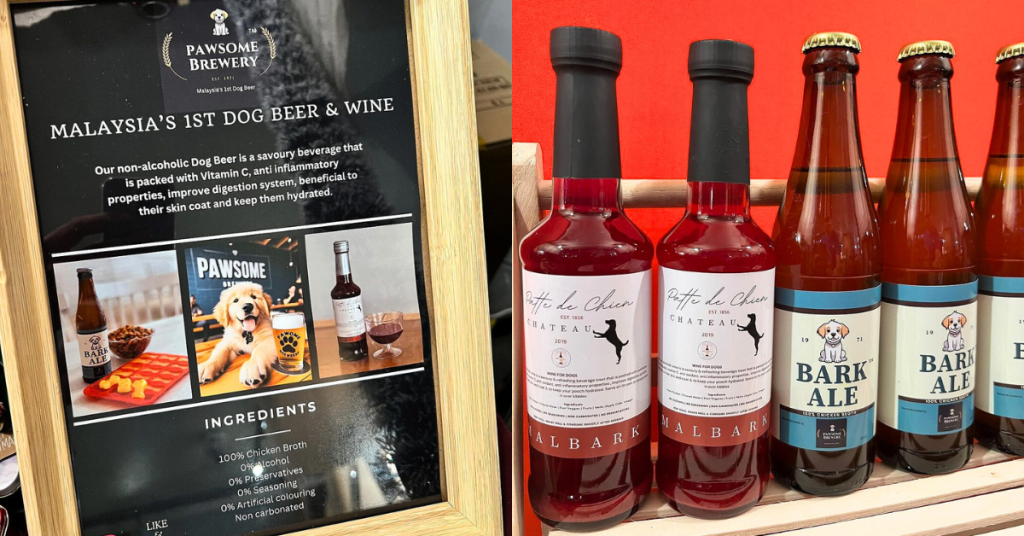
Though, this list will likely grow soon as the brand collaborates with more bars and pet-friendly cafes.
Widening their playing field
It’s been slightly over a year since Pawsome Brewery launched and the reception has been good. So far, Stephanie reported that they’ve sold around 350 bottles of Barkale and 400 bottles of Malbark.
Aside from expanding the product line, she plans to first broaden the brand’s reach to other states in Malaysia. Though, the bigger goal is to enter China and Korea.
To achieve this, she’d need to invest more in R&D to lengthen the products’ shelf life and improve its packaging. Both of which they don’t have the resources for at the moment. But she’s open to collaborating with others interested in funding the venture.
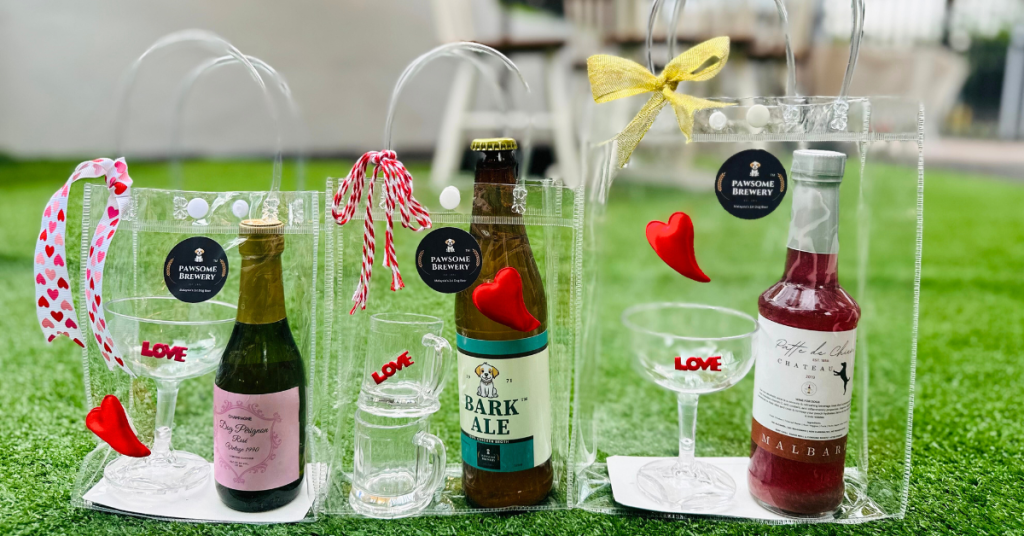
Closer to home, though, Stephanie and Herbie are delighted to include Skippy in another part of their lives.
“We usually would eat our meals with wine. With our own products now, Skippy doesn’t just stay beside our chairs, wondering what we are eating or drinking up on our table. She gets her own table, food and wine or beer too,” she quipped.
- Learn more about Pawsome Brewery here.
- Read other articles we’ve written about Malaysian startups here.
Also Read: Scientex is on a mission to prove that young M’sians can afford landed homes in urban areas
Featured Image Credit: Pawsome Brewery
How this social enterprise in Ipoh helps the needy beyond just giving handouts
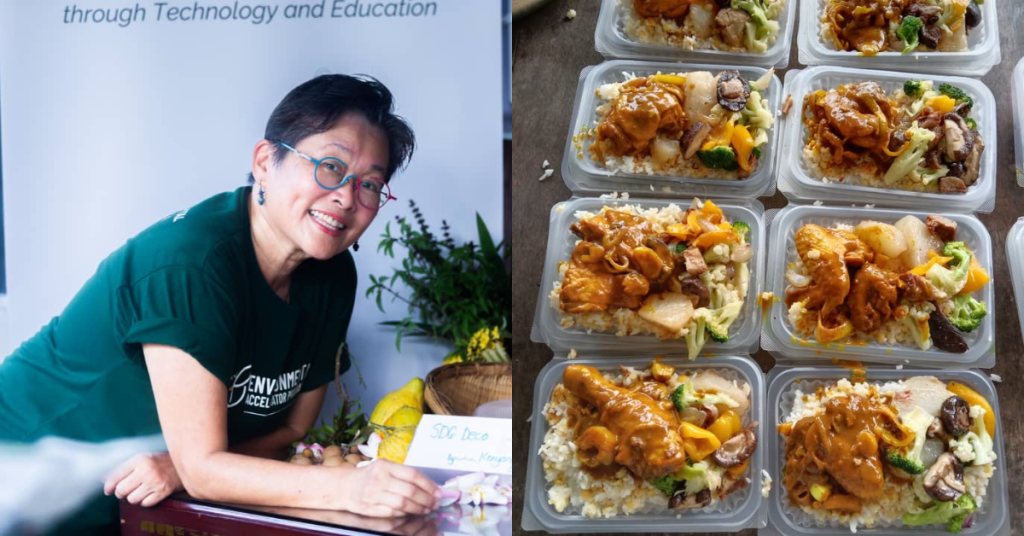
Every year, 8.3 million metric tonnes of food is wasted in Malaysia. That’s more than 22,000 tonnes every day.
At the same time, many go hungry in this country on a daily basis. Clearly, there’s a gap between the food that is available and the people who need it the most.
One organisation that’s addressing this issue is Kenyang. Meaning “full” in Bahasa Melayu, Kenyang is an Ipoh-based organisation that aims to keep its beneficiaries’ tummies satiated.
They do this by partnering with organisations such as Rise Against Hunger, BEACON Chicken, Fantastic Pastry Academy, and vegetable farmers from Cameron Highlands who provide surplus food that would have otherwise entered landfills.
Founder Tan Yuen Mun (Mun) was first inspired to feed the community when she came across Hamka, a scholarship student who was studying to become a doctor. Yet, he was about to drop out of university due to his poor health stemming from a lack of food.
“Witnessing Hamka, who once was on the brink of academic fallout due to health issues, but has since graduated as a family medicine specialist, affirmed our belief to assist the underprivileged,” Mun shared.
Today, Kenyang helps poor communities become independent, starting by literally putting food on their tables.
A grassroots project
Starting out, Mun didn’t envision Kenyang to be a huge project. It simply started because she noticed students were lacking food.
However, when she began providing meals in 2019, Mun understood the real issue of food insecurity.
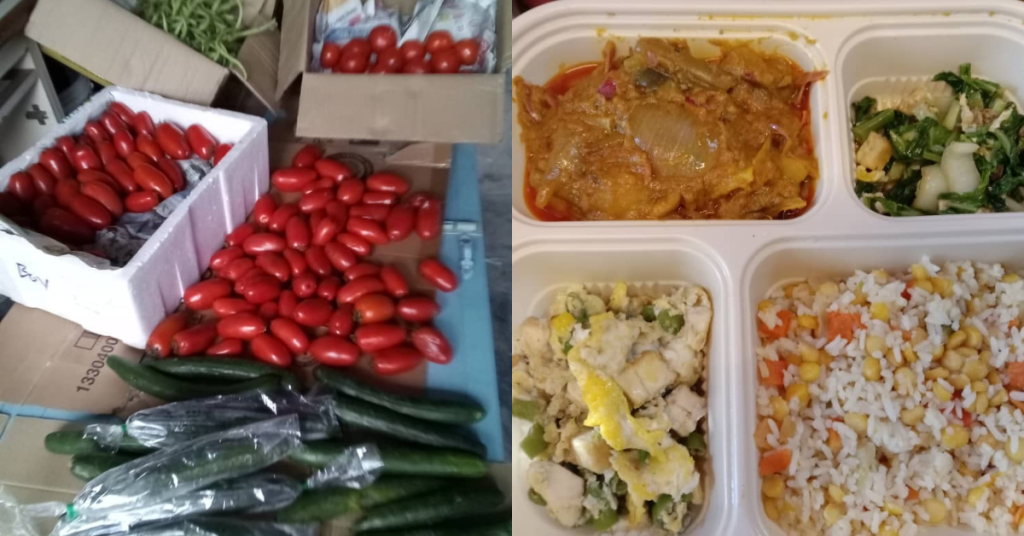
“Kenyang slowly evolved as a solution to this problem,” Mun explained.
The idea for it began in 2022, and it took more than 15 months to launch the feeding programme in November 2023.
“I dug into my own savings for the initial funding to kickstart Kenyang,” the founder said.
Prior to Kenyang, Mun spent 10 years operating a homestay in KL as well as a catering service, providing her with the know-how to run Kenyang.
Today, Kenyang is her full-time commitment, though she financially sustains herself with other income sources including her homestays.
Meanwhile, Kenyang is sustained thanks to the collaboration of individuals and NGOs. Mun also secured funding from Biji Biji Accelerator Initiative, contributing to the start of Kenyang’s feeding programme and development of 117 Hub, Ipoh.
117 Hub serves as a homebase for Kenyang where the team coordinates distribution of their meals.
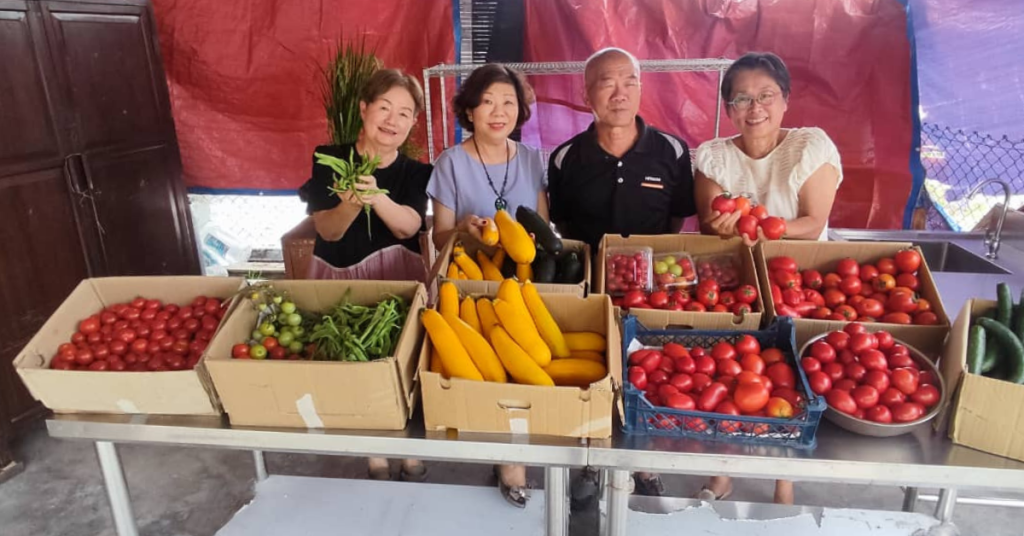
But beyond that, it functions as an institution where Mun and her team teach about living sustainably. It’s a centre for their hands-on home living programme for corporates and schools, as well as a sustainable community garden for people to grow their own crops.
The hub’s first phase, which is the 117 Hub homestay has been completed and is set to open in the first quarter of this year. The upcoming phase two will involve the sustainable home living model and a rooftop garden, while phase three will be about planting ulam and other edible crops.
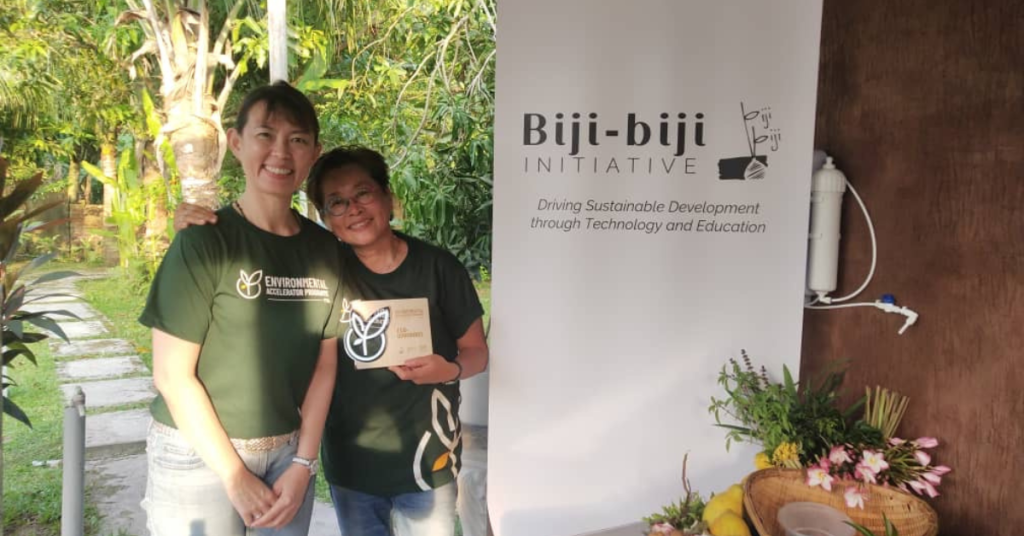
Aside from the support of Biji-Biji Initiative, Kenyang also stays afloat through a mix of personal and goodwill seed money.
Impact over profits
The beneficiaries of Kenyang are those whom they believe who need the support the most—children aged between 7 to 12 years old from the B40 community.
Aside from providing meals, Kenyang supports them in personal growth, studies, and other useful skills, setting them up for success in secondary school.
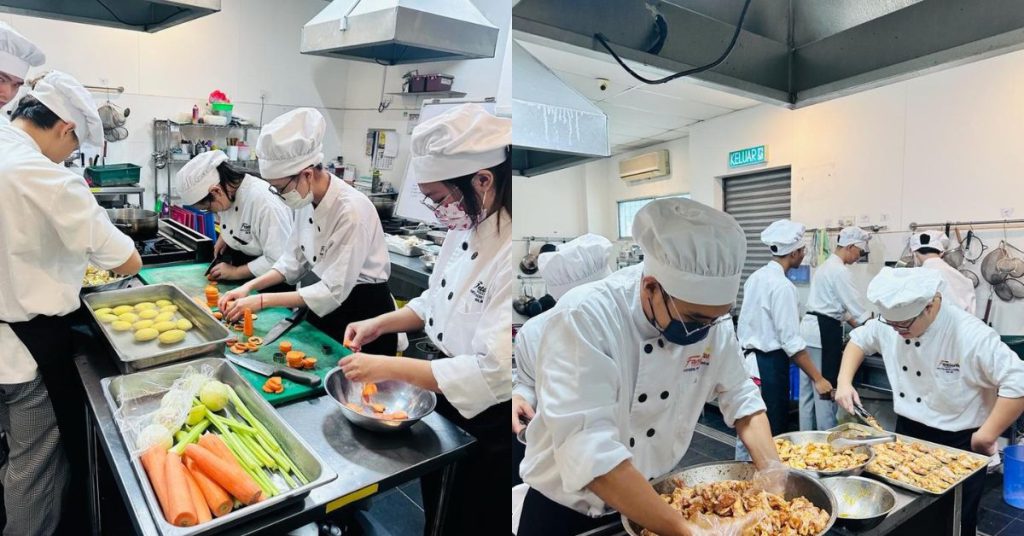
Kenyang also supports adults by offering training in skills that match what local companies are looking for. This aligns with their bigger goal of empowering people for the long term.
“At Kenyang, our primary focus is on giving back to the community rather than profits,” Mun said when asked about Kenyang’s revenue model. “Instead of seeking monetary gains, we channel our efforts into salvaging food that would otherwise go to waste and redistributing it to those in need.”
She believes that by keeping people in Ipoh well-fed, they will have the strength to overcome challenges.
For 2024, Kenyang aims to increase its impact. Last year, the team provided meals for 32 children, and are now aiming to support 45 kids.
To do this, the answer lies in strategic partnerships and collaboration. They’ll need coaches or mentors for their sustainability programmes, suppliers for the Kenyang RM0 meal initiative, and sponsors for various activities such as boot camps and student family welfare programmes.
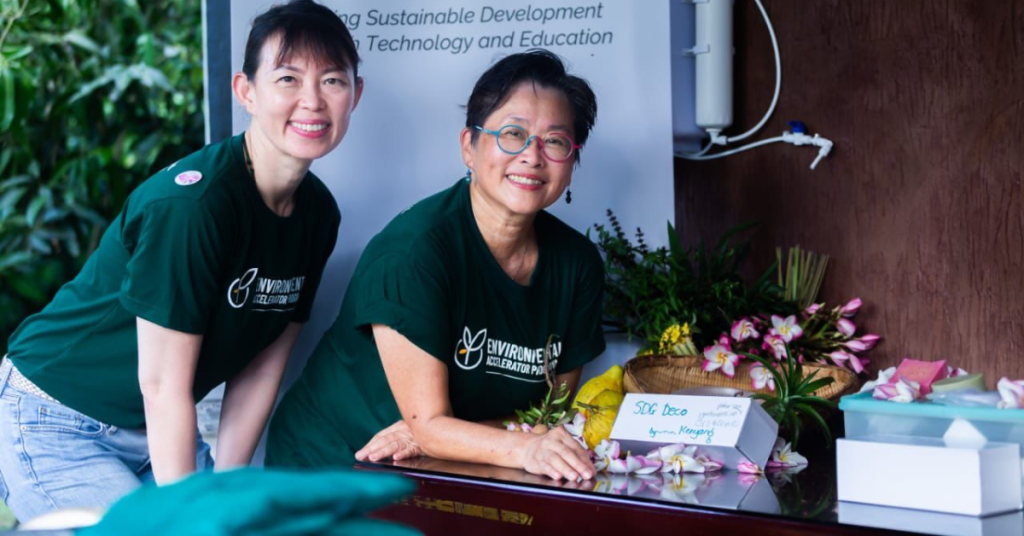
Aiming for 117 Hub to become self-sufficient in three to five years’ time, they will also have income-generating initiatives like the homestay, sustainable gardens, and other food-related services.
Give a man a fish
As the famous adage goes, “Give a man a fish, and you feed him for a day. Teach a man to fish, and you feed him for a lifetime.”
This quote highlights the importance of not just giving handouts, but instead providing knowledge to be self-sustaining. Kenyang conducts itself according to this mindset by going beyond immediate assistance.
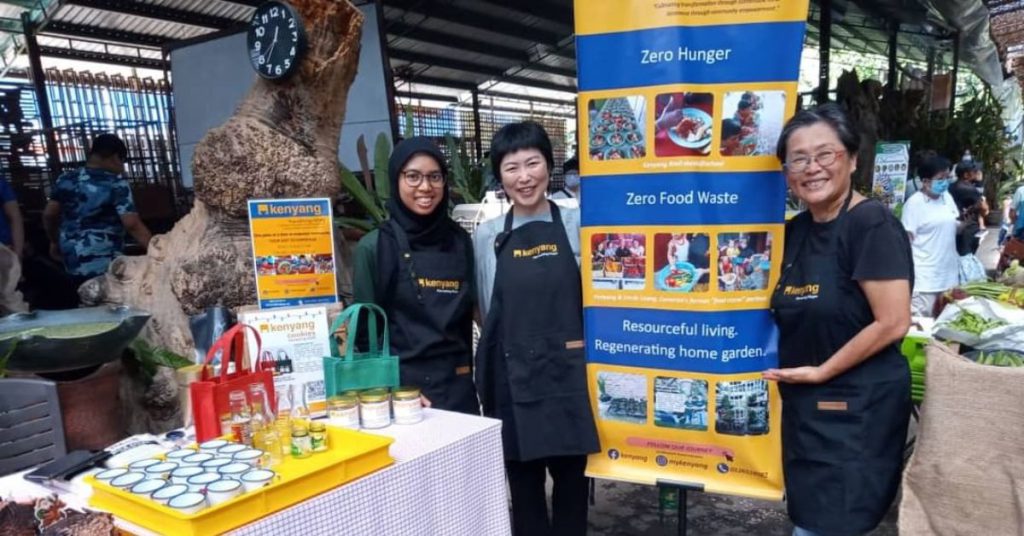
“We are not practising a ‘hand-out’ model but working towards a ‘3-In-1’ model where everyone plays a part in making sure no one goes hungry,” Mun said. The three in three-in-one refers to recipient, sponsor, and Kenyang.
However, before people can begin to be self-sustaining, they must first have enough energy and food to cover their basic needs. Just look at Hamka’s case. So, Kenyang starts its aid with meals, but the end goal is to support recipients until they can stand on their own.
“Success for Kenyang is when recipients no longer rely on Kenyang meals, can generate their own income, and adopt sustainable living and zero waste principles,” Mun said.
Also Read: Fee for using DuitNow QR? Here’s what the merchant discount rate means for merchants & users.
Featured Image Credit: Kenyang
1 yr into their handcrafted fragrance biz, these M’sian sisters made it into Tsutaya Books
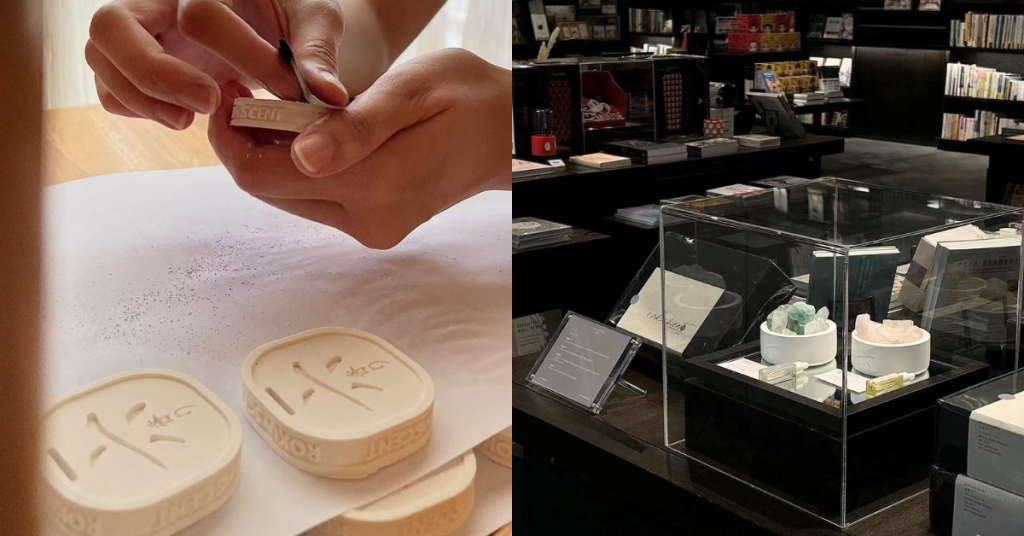
One thing I’ve noticed people are keen on purchasing these days is fragrance. Not just perfume, but aromatherapy home products like candles and diffusers.
With such a growing interest, it’s not surprising that many brands have mushroomed to meet this demand. Rokuscent is one such local name.
Scrolling through their products, you might dismiss it as another company selling OEM products. But after learning that it actually has a counter at Tsutaya Books in Pavilion Bukit Jalil, I was intrigued.
After all, it’s not just any brand that can set up shop at the Japanese bookstore. Every brand there is handpicked and curated to cultivate a specific culture and lifestyle.
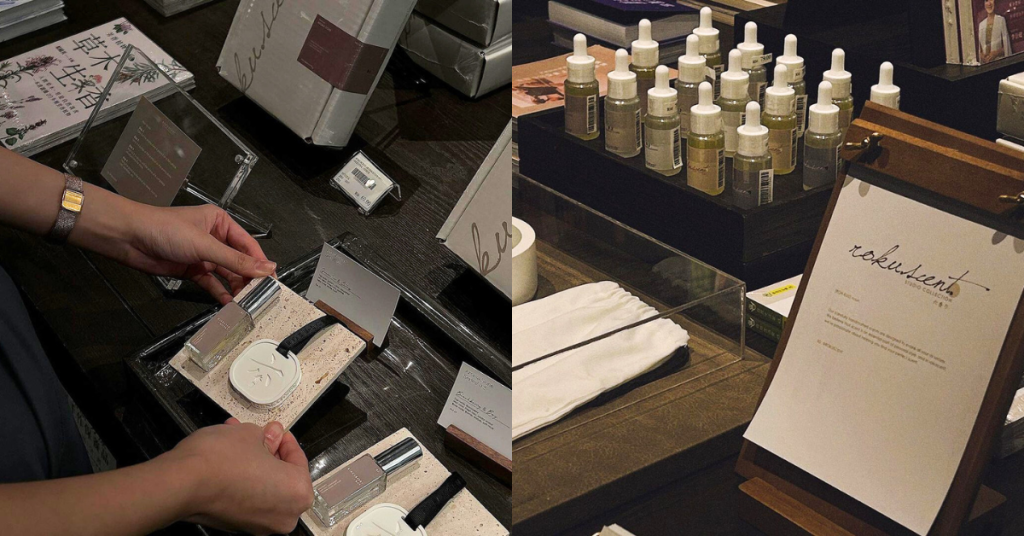
So why was Rokuscent one of them?
Seizing the opportunities that come
Started by sisters Adeline and Charlotte, Rokuscent isn’t a brand that just sells good smells. Their goal is to actually evoke emotions and fond memories through scents.
Elaborating on this, the sisters shared that they drew inspiration from the concept of the sixth sense. Which is why they named the brand Rokuscent as “roku” refers to the number six in Japanese.
“This name encapsulates the very essence of our mission and the unique experience we aim to offer—a multisensory journey,” they stated.
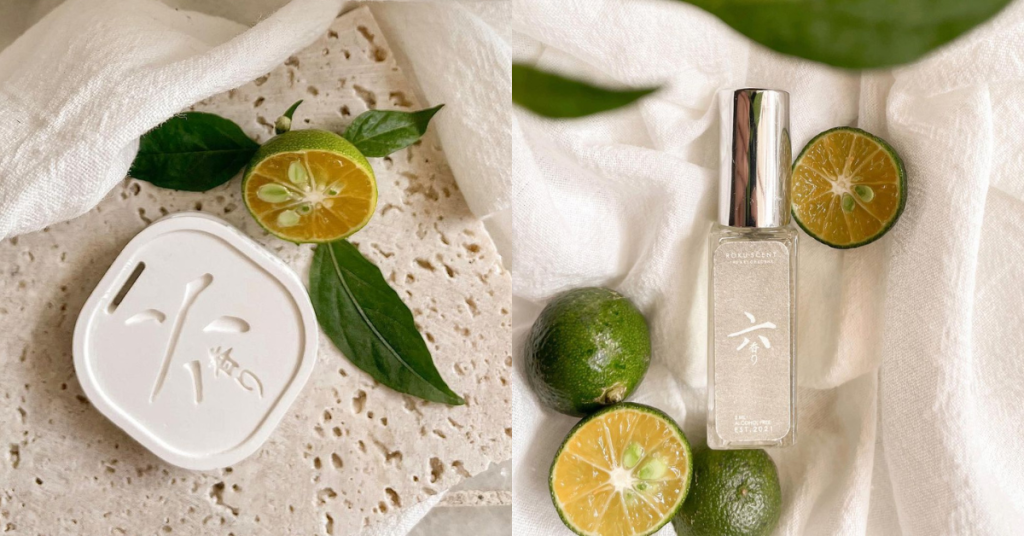
With this in mind, it’s probably no wonder that Tsutaya Books was drawn to them.
Initially, the bookstore reached out to the sisters for a pop-up event. But seeing how good the reception was led Tsutaya Books to offer them a permanent spot since September 2023.
Not bad for a passion project that started with RM5,000.
Turning powder into usable ornaments
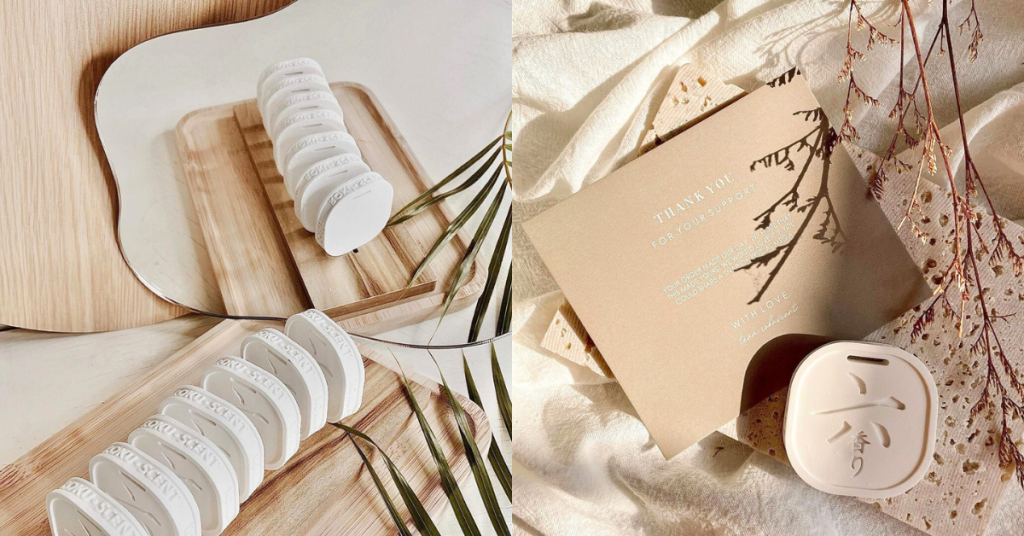
But apart from that, it’s also due to the handmade value of Rokuscent’s products. Specifically, its aroma stones and crystal domes.
At first glance, Rokuscent’s aroma stone might look like a factory-made block of white stone. But each piece is handmade using ornamental plaster powder by the sisters themselves to ensure its quality.
Shaped like a squared coaster with curved edges, the aroma stone comes with a detachable ribbon so you have the option of hanging it.
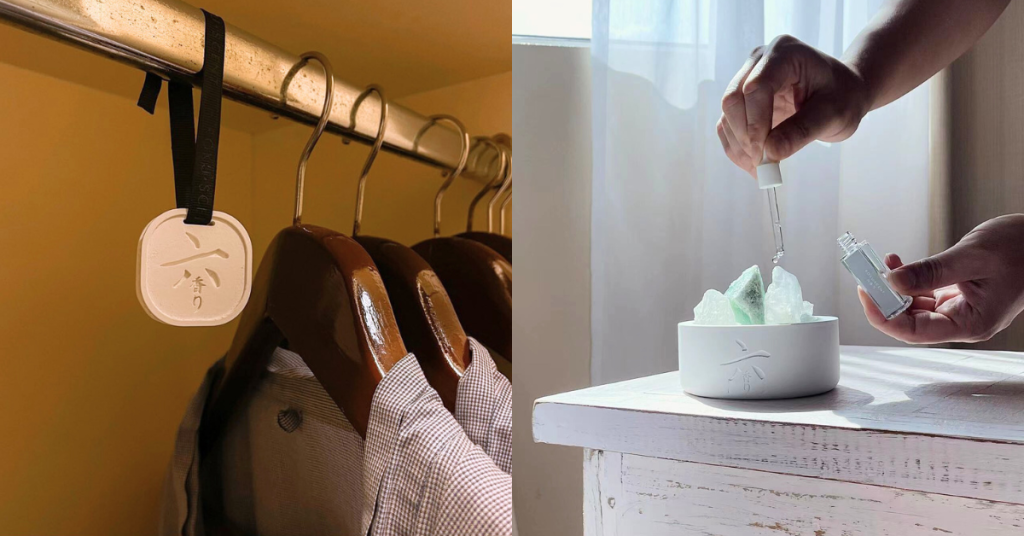
It acts as a diffuser, so all you have to do is put a few drops of the brand’s aroma oil onto the stone.
Made using plaster powder and water, each stone is handpoured into custom moulds featuring the brand’s logo. Once dried, each stone is sanded and soaked in water to get rid of rough textures before drying again.
The aroma oils, however, are actually imported from Korea due to their diverse palette and quality. They can be purchased separately (RM19.90 for 5ml) and come in a variety of scents like Lime Basil & Mandarin and Pomelo & Rose.
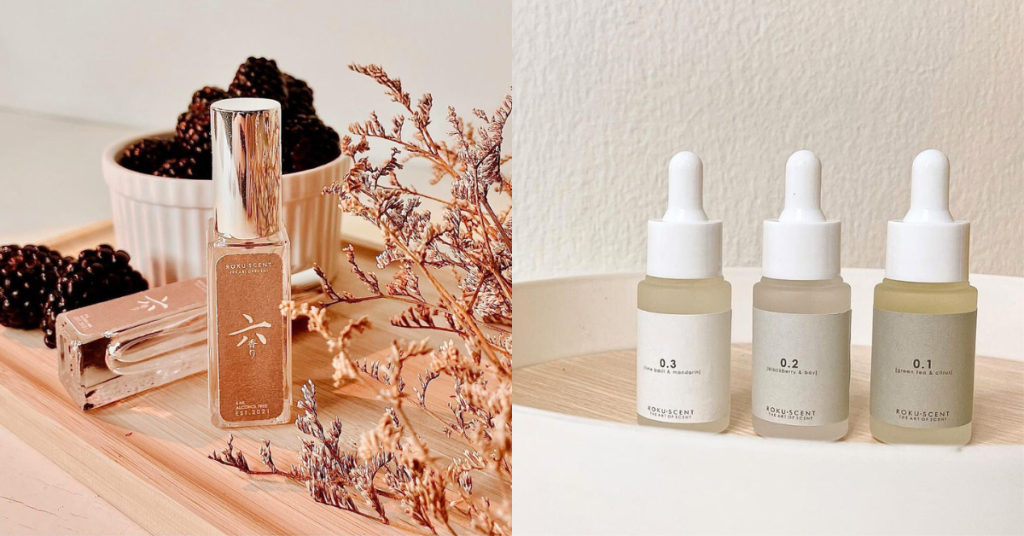
Originally, the idea for Rokuscent was to create more fashionable car diffusers and home fragrances. But it’s since expanded to include other aromatherapy products like its crystal dome diffuser.
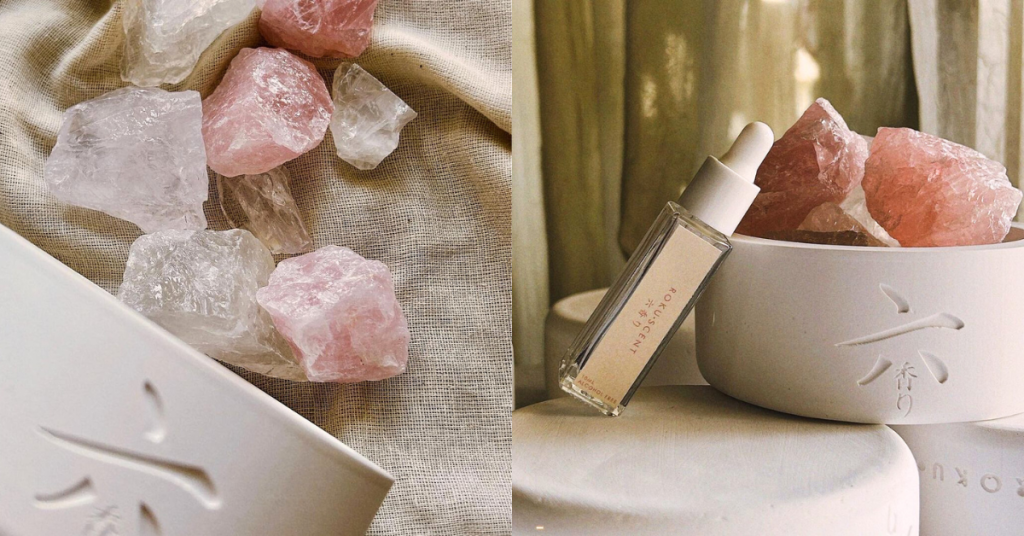
The sisters introduced this a few months after the aroma stones.
Shaped like a trinket dish, its crystal dome diffuser houses Himalaya salt crystals that serve as a medium to diffuse the aroma oils.
In terms of pricing, the aroma stone is priced at RM59, whereas the crystal dome diffuser is priced at RM149. Both of them come in sets with an aroma oil of your choice.
Keeping sustainability in mind
To increase their offerings, Adeline and Charlotte decided to outsource some products, such as the marble stones and reed diffusers.
These aren’t made in-house but still sport its signature minimalist look. It’s also a more sustainable practice of consuming aromatherapy products.
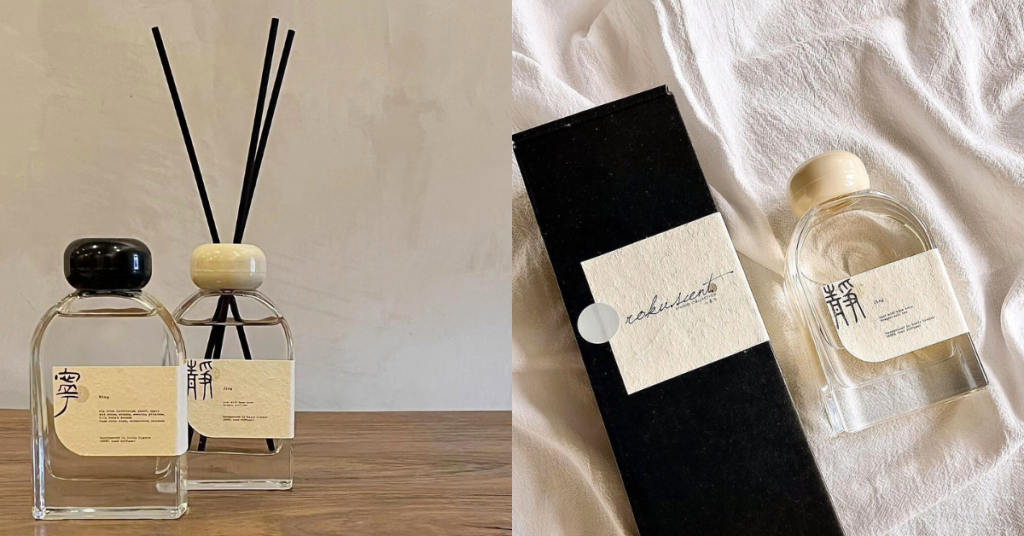
For context, all of the brand’s items (except for the reed diffusers) are reusable and only require periodical aroma oil top-ups. Hence, there’s less wastage compared to a regular car diffuser and scented candle.
Not to mention, none of them require the use of electricity nor the use of open flames.
With sustainability in mind and to increase its long-term use, the duo provides customisation services. You can choose to have it in your preferred colour, add a name or date stamping, and even a logo for corporate clients.
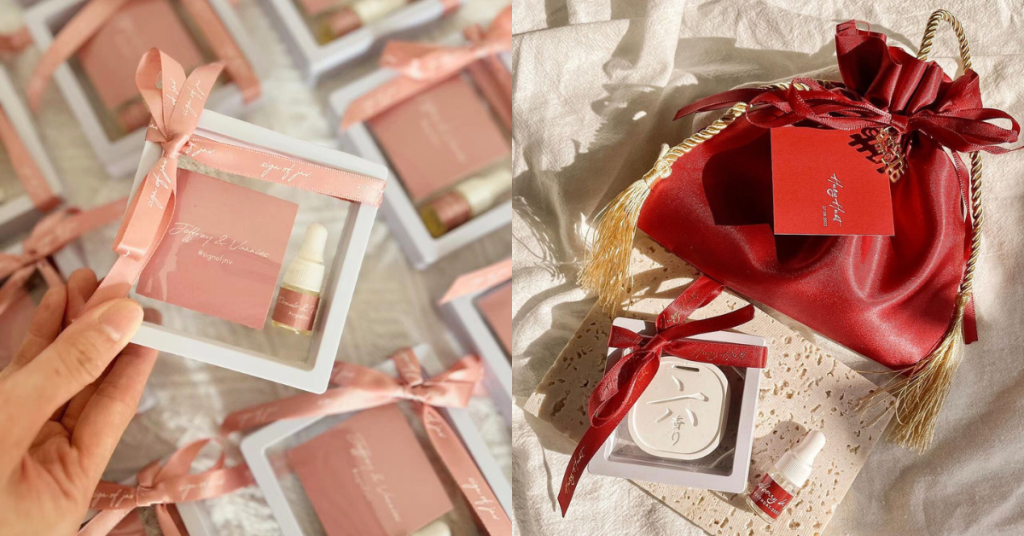
On average, they create and supply between 200 to 300 aroma stones every month.
Giving their scents a fighting chance
Speaking openly, Adeline and Charlotte said that this collaboration with Tsutaya Books has significantly expanded the brand’s public visibility.
Seeing the results, the sisters are planning to open their own physical store soon. By doing this, it would allow them to showcase Rokuscent’s fragrances and provide customers the chance to explore their products in a tangible way.
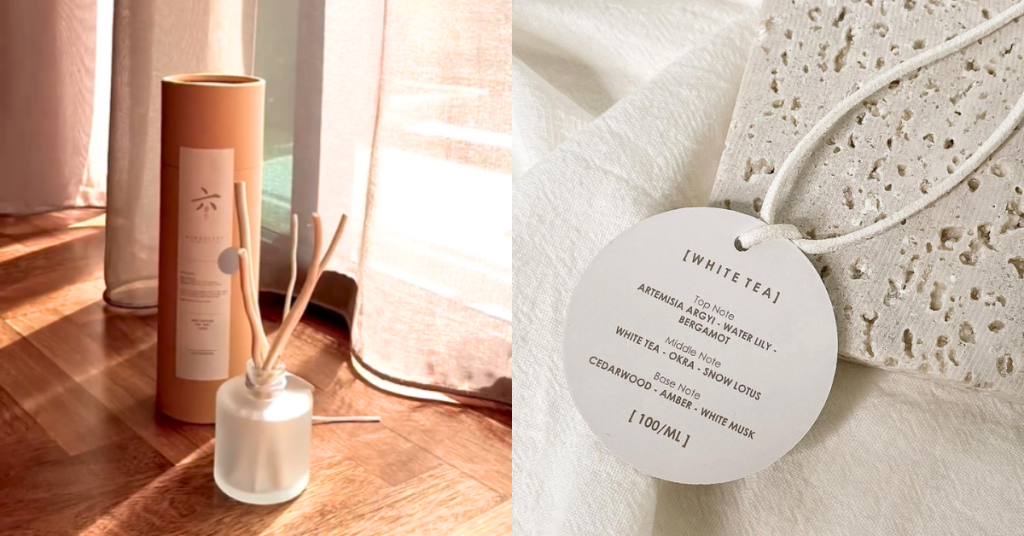
Other than that, it could open the brand’s market opportunities to a larger audience, particularly those that aren’t online.
It’s a rather challenging market with many brands in Malaysia offering similar products, some at perhaps more affordable price points too.
But Adeline and Charlotte aren’t too worried about the competition. Taking it one step at a time, their focus now is to refine and expand Rokuscent’s catalogue to attract bigger crowds.
Also Read: Scientex is on a mission to prove that young M’sians can afford landed homes in urban areas
Featured Image Credit: Rokuscent
From rags to riches: Meet BYD’s Wang Chuanfu, the billionaire founder of S’pore’s top-selling EV brand

When BYD first announced that it would transition from making batteries to electric vehicles (EVs) and hybrid cars in 2003, it was met with ridicule and scepticism. Wang Chuanfu, the 57-year-old founder and CEO of the firm, recalled that the value of BYD’s shares halved as investors questioned its strategy.
But they’re not to blame. After all, many companies that have tried to break into the industry have failed miserably, mainly due to the small market size and the need for breakthrough innovations to commercialise the vehicles at the time.
Securing investment from Warren Buffet marked a turning point for BYD, yet, the skepticism still followed.
“Have you seen their car?”, Tesla CEO Elon Musk asked contemptuously in a Bloomberg interview back in 2011. “I don’t think they have a great product. I don’t think it’s particularly attractive, the technology is not very strong,” he added.
There were moments where Wang contemplated giving up. Nevertheless, he still sought to realise his vision of transforming BYD into a prominent player in the EV industry.
The 57-year-old eventually brought his aspirations to fruition after years of relentless dedication. By 2023, BYD has dominated the global EV industry, overtaking Tesla to become the world’s biggest EV manufacturer.
In Singapore, it has become the top-selling EV brand, and is the first car brand from China to rank among the city-state’s top 10 best selling cars.
But how did Wang manage to steer his company to such unprecedented success?
He loaned US$300,000 to start BYD

Born in 1966 in east China’s agricultural Anhui province, Wang was raised by his older siblings after his parents, who were both rice farmers, passed away. After obtaining a Master’s degree in battery technology under a scholarship, he went on to become a researcher for the Chinese government.
A few years into his career, Wang moved to Shenzhen, where he founded a cellphone manufacturing company with his cousin, Lu Xiangyang, and named it BYD. With a borrowed sum of about US$300,000 from one of his wealthy relatives, he swiftly established both an office and a factory within four months.

From the outset, BYD sought to replicate successful products made by the likes of Japanese leaders like Sanyo, Toyota, and Sony, but at a lower cost.
Instead of investing into expensive machinery, Wang relied on a huge workforce of more than 1,000 workers. He broke down the battery manufacturing process into hundreds of steps that untrained workers could manage without expensive equipment.
Although incorporating more manual labour meant that the company sacrificed its nominal productivity by approximately ten fold as compared to Japanese companies, BYD’s batteries still held a competitive edge—their unit cost was five or six times lower than that of Japanese batteries.
By 2002, BYD had established itself as one of the world’s top five rechargeable-battery manufacturers, attracting major customers such as Motorola, Siemens, Samsung, and Nokia.
He drank battery fluid to impress investors

Riding on the waves of success, BYD went public on the Hong Kong Stock Exchange in 2002, but Wang’s ambitions did not just stop there.
Seeing the potential for the use of batteries in the automobile industry, he purchased a failing state car manufacturer, Tsinchuan Automobile, and ventured on a journey that would see BYD evolve into a major player in the global EV market.
Despite facing pushback from its investors, BYD released its first car in 2005, a gasoline-powered sedan called the F3 that resembled the Toyota Corolla. In fact, the two were almost identical; to the untrained eye, the only difference between the cars was their insignias.
But the F3 was also significantly more affordable than its rival, which could explain why the gasoline-engine car topped sales charts in China by the late 2000s. The car was sold for as little as US$8,000, which was about half the cost of a Toyota Corolla then.
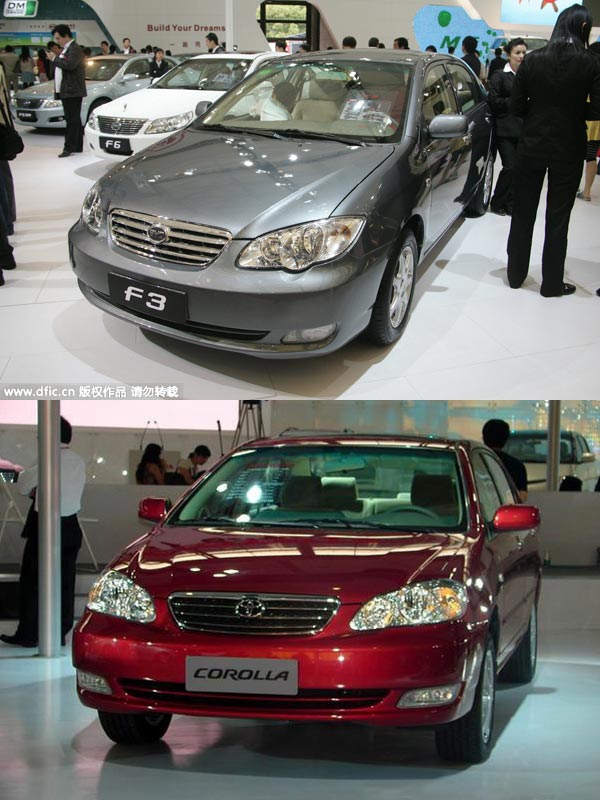
The success of BYD in China soon caught the eye of Warren Buffett, on the recommendation of his partner, the late Charlie Munger, as he looked to capitalise on the growing automative industry in the country.
During a tour of the business’ factories and operations, Wang reportedly took a sip of battery fluid to impress the investors and prove that that BYD’s batteries had the “potential to solve environmental problems, rather than create more”.
His bold move proved to be successful. A few months later, the firm secured a US$230 million investment from Buffet’s Berkshire Hathaway in 2008 for a 10 per cent stake in the company.
“We have to learn from them, then we can stand on their shoulders”
Much like BYD’s battery arm, Wang opted for a workforce-heavy approach for the company’s auto business. Instead of investing into automation, he once again hired thousands of workers to handle simple processes.
According to the Wall Street Journal, these employees were often brought in on short-term contracts, allowing the company to replace them within a couple years to avoid increasing wages.
Apart from this, BYD also strategically shifted its production in-house for nearly all components, including its lamps and semiconductors. Since the company’s inception, Wang has always strived to independently manufacture the crucial and costly elements of its vehicles.

Wang has always remained transparent about his strategy of imitating various competitors in the automotive scene. In various interviews, he candidly acknowledged that BYD drew inspiration from existing products, however, he avoided replicating patented components.
We have to learn from them, then we can stand on their shoulders.
– Wang Chuanfu in an interview on a Chinese news program in 2021
2019 was a year filled with challenges for BYD
Following Buffet’s investment into the company, BYD made its next big splash by launching the world’s first mass-produced plug-in hybrid, beating many global names like General Motors and Toyota to the punch.
The plug-in hybrid was initially sold to a limited number of government agencies and corporations in China. The following year, BYD subsequently began manufacturing its first all-electric car.
By the end of 2009, BYD had gained US$5.1 billion in value, and Wang had become the richest person in China, topping Forbes China’s rich list for the first time.

Things seemed to be smooth sailing for the automative company for the next couple of years, that is, until the emergence of Tesla and other EV startups in the Chinese EV market.
In 2019, BYD’s earnings plummeted by half, with the company selling 21 per cent fewer vehicles than it had in the previous year amid the competition. At that point, Wang openly shared that the company had only one goal—survival.
To keep up with the rapidly evolving EV landscape and revitalise its position in the market, the brand redirected their focus onto innovation and R&D. Eventually, BYD came up with Blade, a battery that could safely power EVs over longer distances.
In 2020, Blade made its debut with BYD’s Han electric sedan, which can drive 375 miles (approximately 600 km) in a single charge. The EV costs around US$30,000, which is less than half the price of a Tesla Model S with a similar range.
BYD is looking to “aggressively expand” across S’pore
BYD’s global sales has since quadrupled from 2020 to 2022, solidifying its position as China’s top seller of new-energy vehicles.
Having conquered the Chinese market, BYD is now actively seeking to enter overseas markets for their global expansion. Today, the company is present across 6 continents, in more than 70 countries, and over 400 cities worldwide, including Singapore.

Although BYD has been in Singapore since 2014, the company recently doubled down on its expansion efforts in the city-state.
Last June, the EV manufacturer has collaborated with EightX Lifestyle Group to open their first lifestyle centre, BYD by 1826 at Boat Quay, which allows customers to dine while learning more about BYD’s EV technology.
Two months later, the company went on to launch a cafe-cum-showroom in a mall in the heart of downtown, right next to another shopping centre that houses Tesla’s showroom.
Looking forward, BYD shared that it has “aggressive expansion plans” in store for the region, including the opening of two or three more outlets this year, up from the current crop of seven outlets.
Beyond Asia, it is also looking to strengthen its presence across various regions including the Middle East, Africa, Europe, and North America.
Ultimately, BYD is looking to position itself amongst the top tier of carmakers worldwide and command the same amount of recognition and esteem as global household names.
“China has yet to create a single international marquee of its own that is universally recognised and respected,” Wang said at a ceremony commemorating the production of BYD’s 5 millionth EV in Shenzhen. “It is time for Chinese carmakers to upend the order of the global automotive industry and chart a course into a new vast territory.”
Embark on your startup journey with MAS-regulated ANEXT Bank, one of Singapore’s first digital banks for SMEs.
Featured Image Credit: Fabrizio Costantini/Bloomberg via Getty Images
Also Read: How China’s Luckin Coffee bounced back from its accounting scandal as it expands into S’pore
After 11 yrs in fine dining, he returned to Penang from abroad & opened a Texas BBQ joint
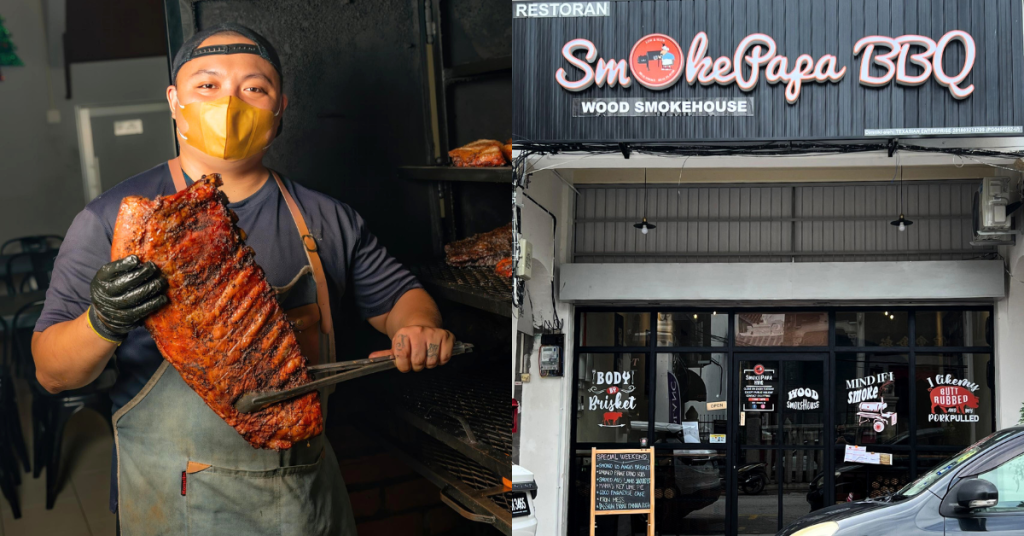
Deemed a foodie haven, Penang is one of the most popular travel destinations in Malaysia. In fact, the state’s Tourism and Creative Economy Committee reported that a total of 1,682,094 tourist arrivals were recorded for the first six months of 2023.
But nestled amongst all these local gems is somewhat of an outlier.
Instead of the Malaysian food that’s made Penang popular, SmokePapa BBQ is a Texan barbecue house with a slogan of, “Low and slow is what we do right here”.
And the man behind it is Hong, a former chef at Marina Bay Sands’ Spago Dining Room, one of Wolfgang Puck’s Singaporean eateries.
Fun fact: Wolfgang Puck is a famed chef and restaurateur that was pivotal in the rise of California’s cuisine during the late 1970s.
Source: The California Museum
Collecting experience points abroad
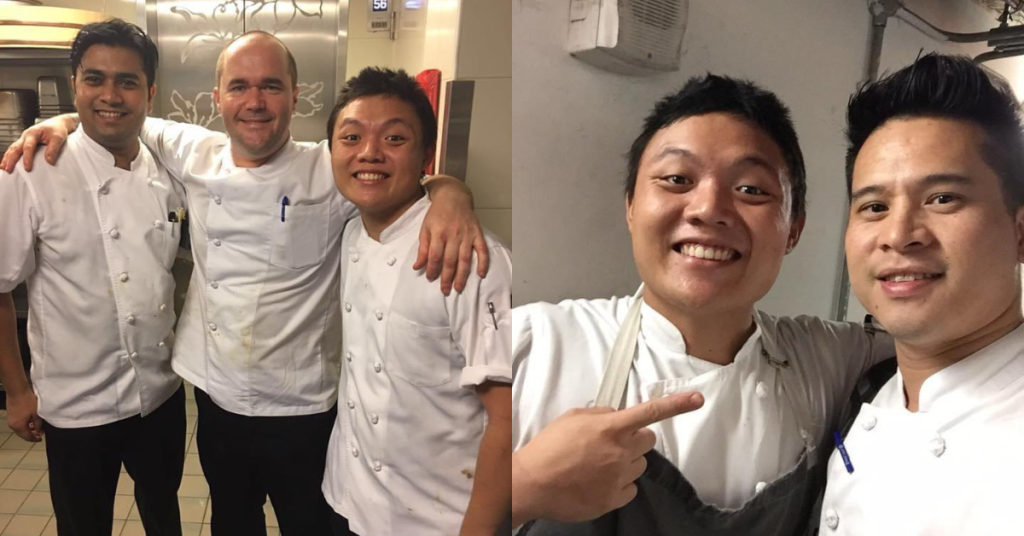
After graduating with a diploma in culinary arts at Taylor’s University, Hong first worked at Starhill Mall in Bukit Bintang, KL. But half a year later, he figured that it wasn’t a sustainable career.
The expenses in KL were high and he couldn’t keep up with them. Especially since he had to live here alone while his family was back in Bukit Jelutong, Penang.
That’s when the stars aligned for him. Hong was offered a job in Singapore as a chef at Marriott Tang Plaza Singapore. The timing couldn’t have been any better.
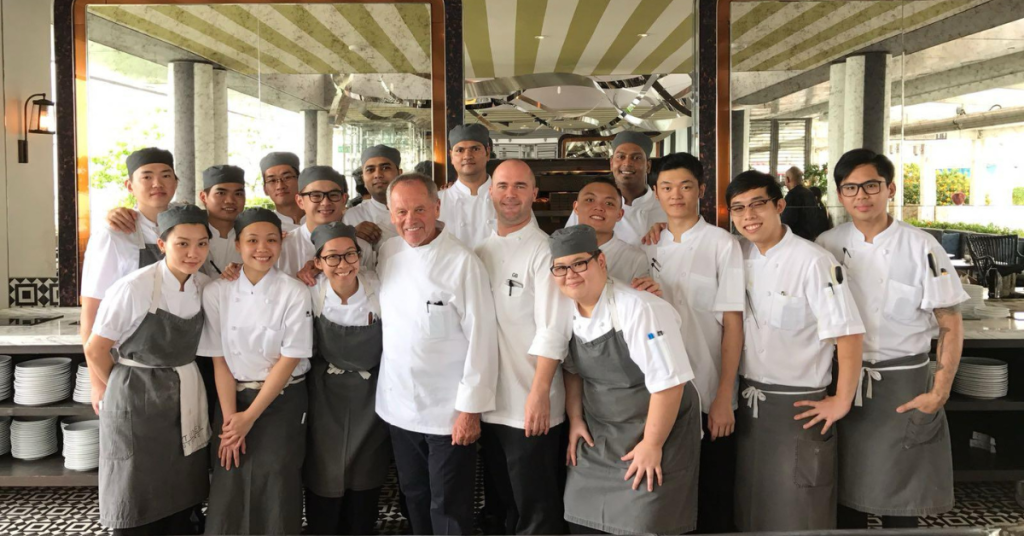
So he packed up and went on a new venture in the neighbouring country. Some time later, he got to further hone his culinary skills in French and American cuisine at Spago Dining Room.
Little did he know, this would change the course of his life.
Ushering in new opportunities
Aside from being his workplace, Spago Dining Room was also where Hong met his Vietnamese now-wife and partner-in-crime, Jen.

It was their relationship and subsequent pregnancy that led Hong back to his hometown in Penang. “Singapore’s expenses were hard for new families, and at the time, I was only holding a work permit,” Hong confided.
This meant that Jen wouldn’t get to enjoy many medical perks awarded only to Singaporean citizens and the cost of settling down there was too great.
Hence, in 2017, the both of them moved back to Penang.
But there was just one problem—the salary difference he earned as a chef in Singapore and Malaysia was vast. And with a new baby son on the way, Hong wanted the freedom and time that being an entrepreneur entailed.
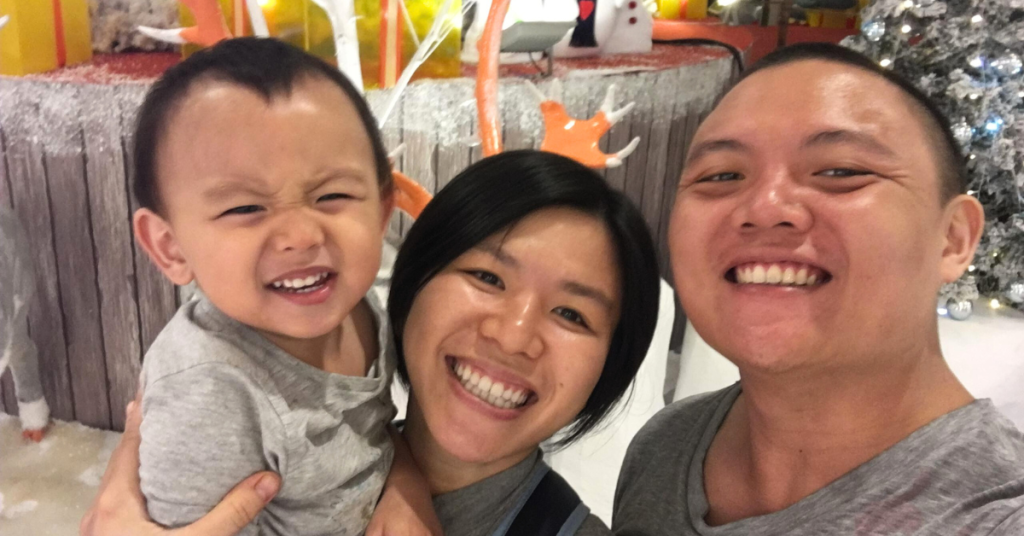
So he decided to start his own F&B business.
Going back to his roots
Originally, Hong shared that he wanted to open a semi fine dining restaurant. But after a failed partnership, that plan fell through.
Not one to give up, he tried again and realised there was one rather consistent interest of his, and that was barbecuing.
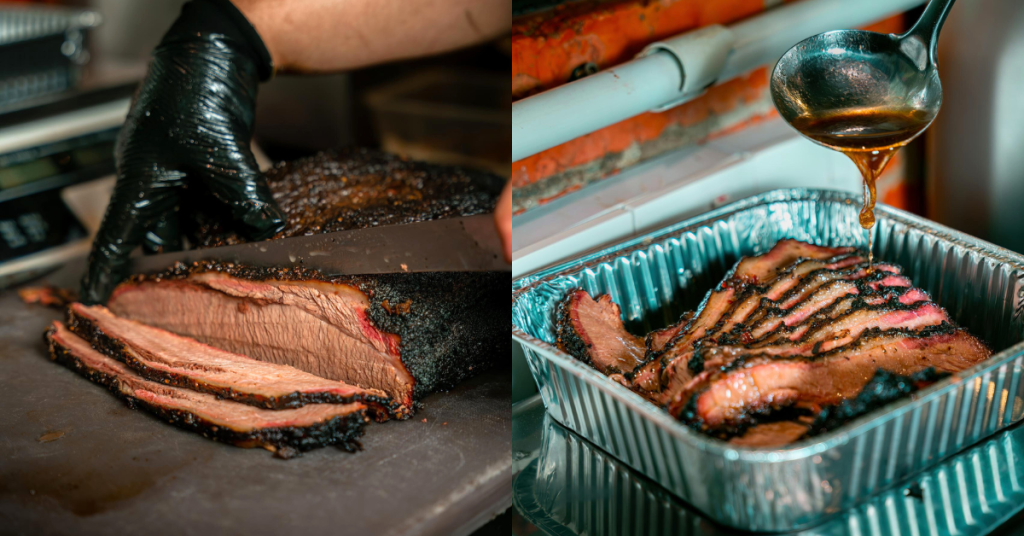
“I like to play with the flames, like to see fire burning,” the co-founder shared. “Whenever there’s a barbecue party, I’d always be at the pit grilling meat all the time. I guess it’s something that attracted me a lot.”
At that point, though, he wasn’t aware about Texas barbecue yet. He only knew about it while researching on social media, and what he saw intrigued the barbecue enthusiast in him.
Having not tried it himself, though, Hong took a trip down to Beard Brothers’ BBQ in KL to see what it was all about. Specifically, he had some beef briskets and short ribs.
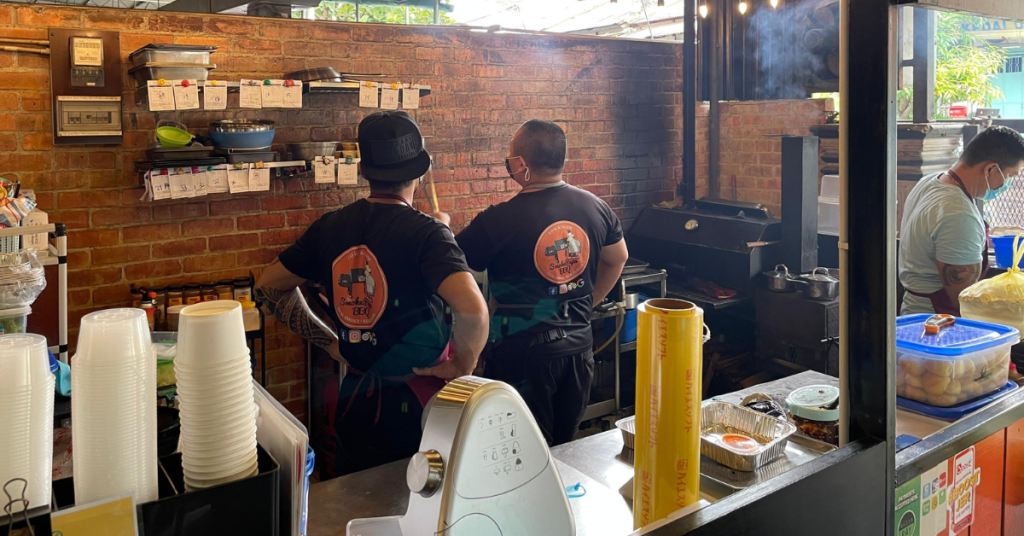
And what he found amazed him. “No one did it yet in Penang, so I had to be the first one to do it,” Hong declared.
Taking his time to hone his craft
It took about a year to set up the business and Hong had to work a few jobs in the meantime to keep income flowing in. Despite the hardships, he was committed to making it work without the help of investors.
By November 2018, Hong and Jen opened up SmokePapa BBQ as a stall at the Sri Weld Food Court.
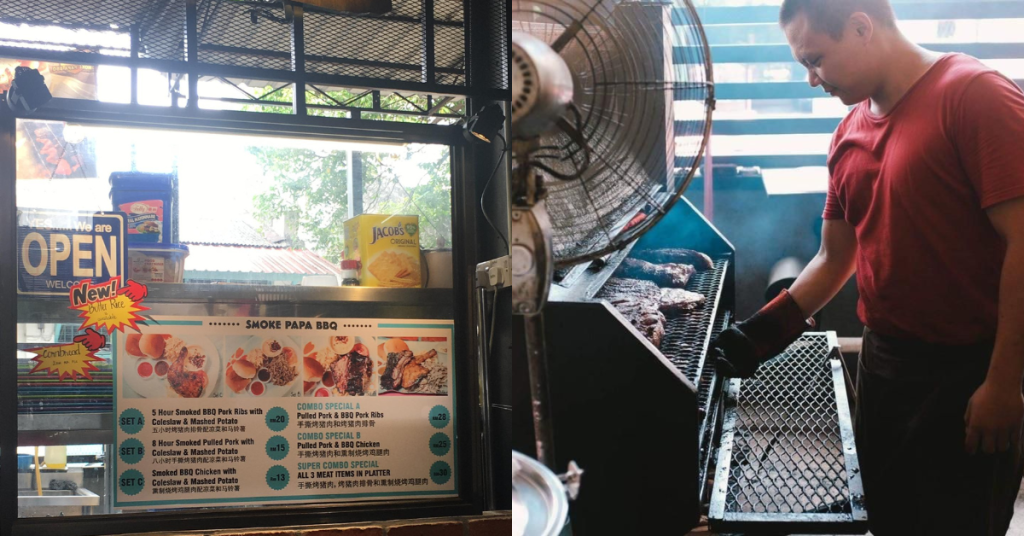
Personally, I found this rather odd as food courts typically house more localised food such as char kuey teow, roti canai, and the like. Sure, some also serve westernised food like chicken chop but nothing like a Texan barbecue spot.
To this, Hong explained that it was a way for him to test the market demand while not splurging too much. Not to mention that Hong himself wasn’t very familiar with cooking Texan barbecue yet at the time.
“Before this, I did a lot of stir frying and grilling. But this was out of my field. It took me about three months to learn to control the temperature and add the wood,” he shared.

For context, Texan barbecue uses a smoker where wood is used to slow cook the food until it’s tender and juicy. According to Hong, this method intensifies the flavour of the meat and marinade.
Growing at his own pace
With Texan cuisine not being very common in Malaysia, the couple had a hard time convincing people to try their food. Most didn’t understand it while others were confused by its burnt skin and pink meat.
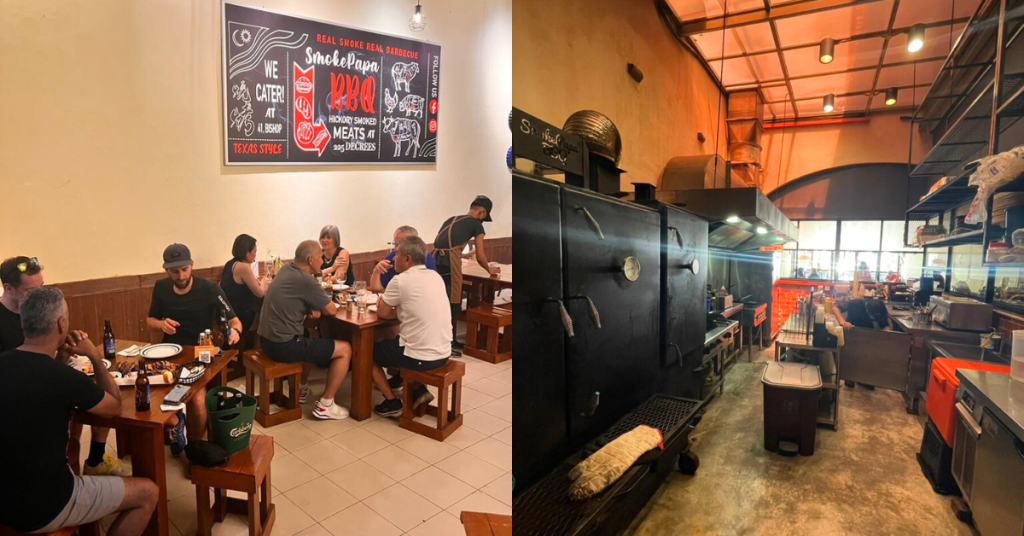
Still, with persistence and strong will, they managed to grow a loyal customer base. All of which contributed to the business’s success and even allowed them to move to their own space in four years’ time.
There, they still serve house favourites like pork ribs that Hong highly recommends. Besides that, customers can also find sets of smoked meat like US Angus Brisket (RM73), Australian Lamb Shoulder (RM70), and sharing platters.
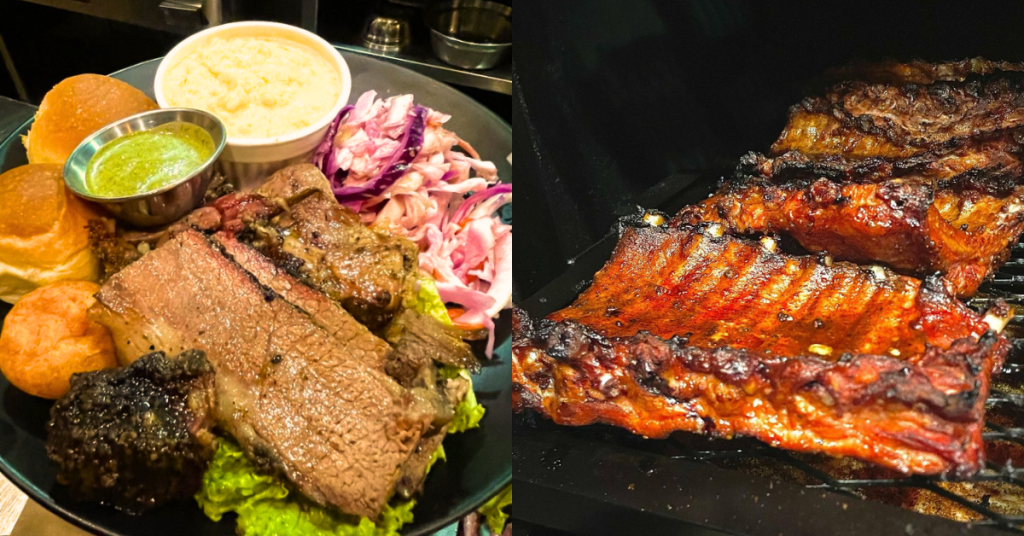
Regarding their son, he likens him to the brand’s one-man PR crew. “50% of customers that come would ask after him.” Hong noted. On the other hand, Jen is the boss and his key support system. “She’s my partner and without her, I wouldn’t have come this far.”
For now, the brand’s only physical store is in Georgetown, though Hong and his family plan to expand in the next few years. Afterwards, Hong hopes to also open his own fine dining restaurant to put his past culinary skills and experience to good use.
But until then, you’ll find him marinating and smoking meat at SmokePapa BBQ with his family in the background.
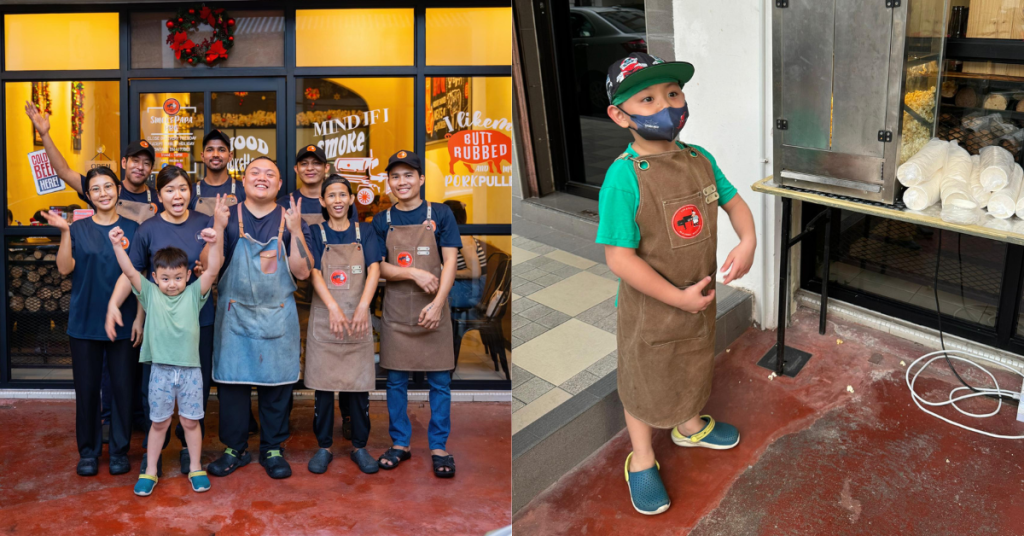
- Learn more about SmokePapa BBQ here.
- Read other articles we’ve written about Malaysian startups here.
Also Read: Scientex is on a mission to prove that young M’sians can afford landed homes in urban areas
Featured Image Credit: SmokePapa BBQ
Founded in the 1950s, here’s how Ann Chin Popiah’s 2nd & 3rd gen owners revamped the biz

With 13 stores and supplying to 10 vendors and hotels, Ann Chin Popiah is arguably one of the most popular popiah brands in the country. Even the Michelin Guide itself has recognised it, specifically for its Chinatown Complex Market & Food Centre location.
First established all the way back in the late 1950s by a Chinese immigrant, Ann Chin Popiah is still run by the family today. Speaking to Vulcan Post, the third-generation leader Pamela shared that she operates Ann Chin together with her mum, Wendy Lim.
Here’s the story behind how this family business has lasted and grown over the past 60 over years, and where it’s going next.
Roots in the 50s
“In my grandfather’s early days, he struggled and worked multiple odd jobs such as a ‘coolie’ at the docks, or as a hawker assistant at the night market just so that he can support the family,” Pamela said about her grandfather, Mr Lim Kam Chwee.
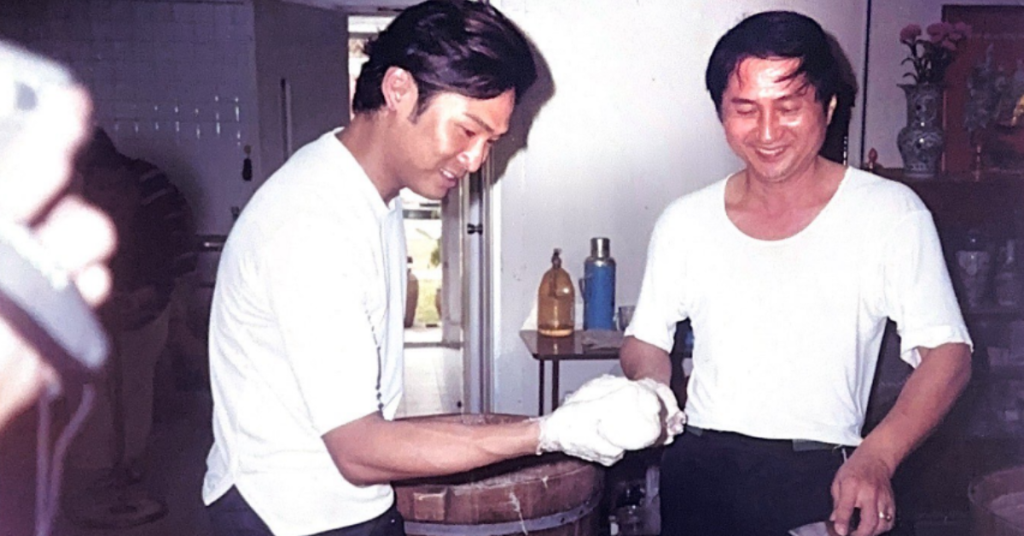
“It wasn’t until the late 1950s that he finally found a breakthrough in life.”
Back in Fujian, China, Lim had mastered the skill of popiah skin-making. Wanting to showcase his skills in Singapore, he took out all of his savings, invested in a pushcart, and named it “Ann Chin”.
In 1958, Lim set up shop in “Orh Kio”, which is now known as Upper Thomson Road.
According to his granddaughter, he built a name for himself in the area, with many recognising him for his fragrant, thin and chewy popiah skin—something that Ann Chin is still known for today.
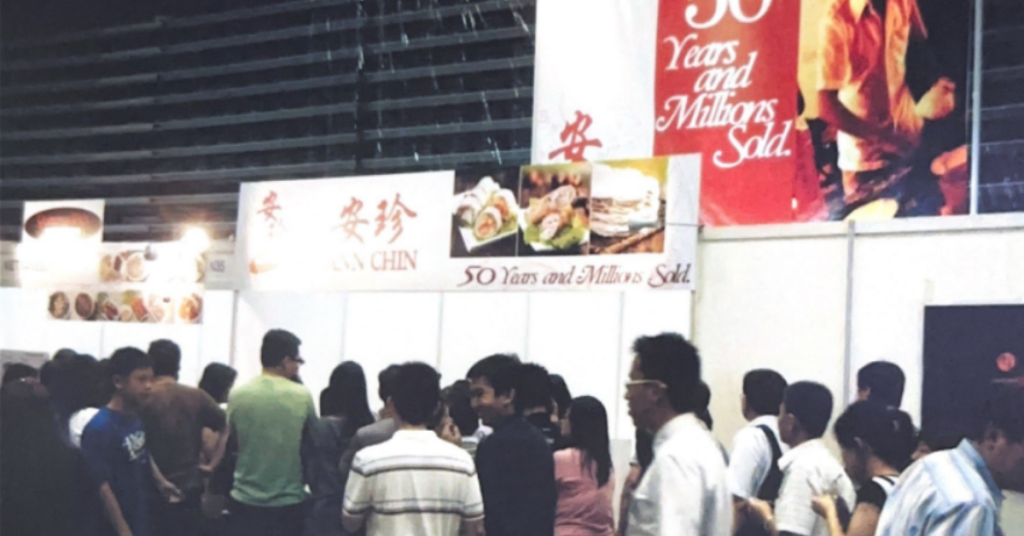
Onto a new generation
While 13 outlets sound impressive, for a business that’s 66 years in the making, that can also be seen as quite low.
To that, Pamela said, “While it may seem enticing to expand quickly, we believe in a tactical and conservative approach to our expansion especially since the overheads and rentals are high.”
Rather than rapid expansion, the mother-daughter duo who now leads the business is much more concerned about upkeeping quality.
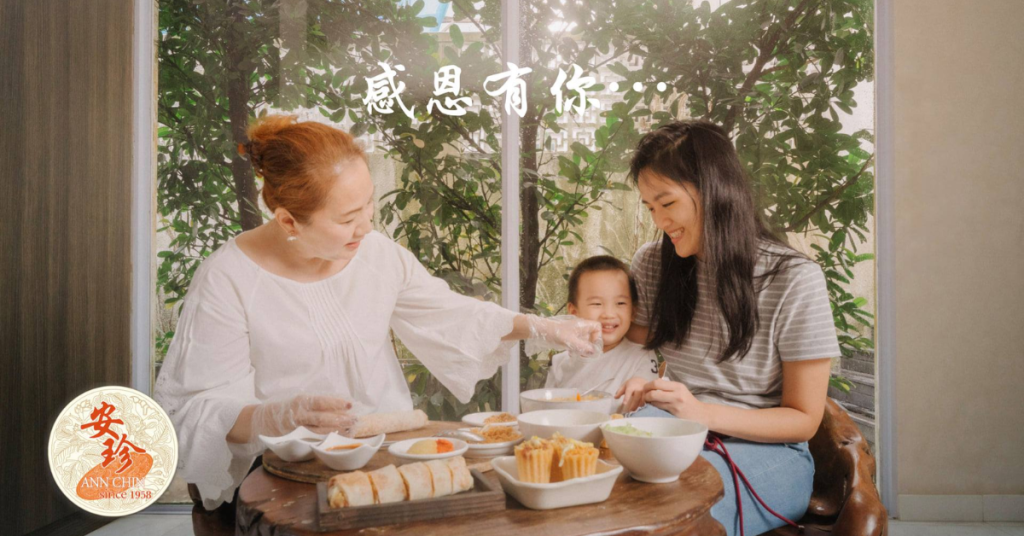
In any case, Pamela and Wendy didn’t always plan on running the Ann Chin business, though.
“My mum used to own a garment factory that subcontracts for sports brands like Nike and Adidas before founding Shirtivo—a custom menswear brand which was subsequently sold to Marcella,” Pamela proudly shared.
As for herself, she helped out in Marcella for a year after graduation before joining a corporate uniform company.
“Neither of us expected to helm the business, but we were determined to continue my grandfather’s legacy of crafting the best popiah skin,” she said. “Back in the olden days, popiah skin was a simple delicacy and that’s what my grandfather focused on.”
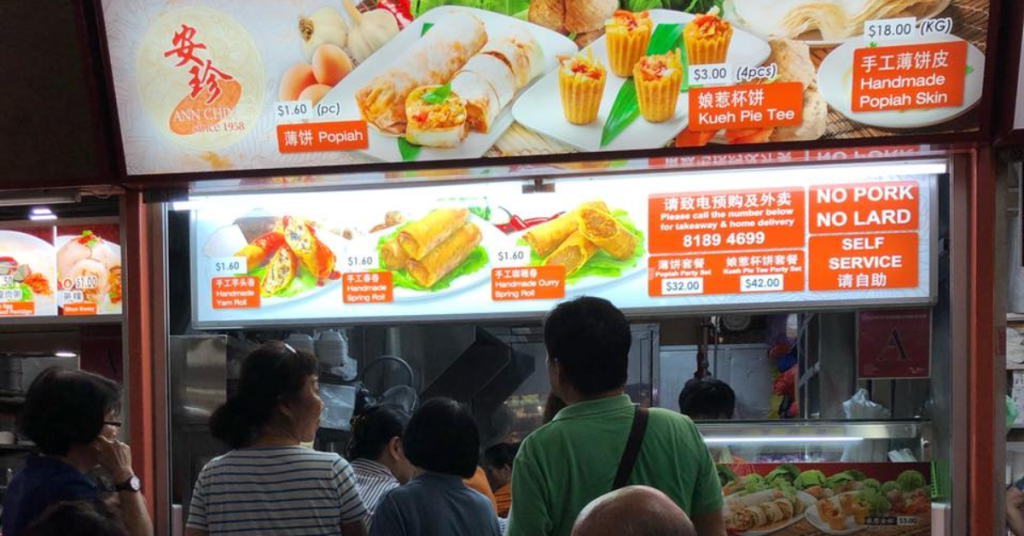
Reinventing the business, Wendy brought the simple popiah skin to the masses in the form of local coffee shops and hawkers. Eventually, they went on to have their own mini cafes, and Pamela created their DIY sets to cater to bigger events.
Wendy also created the so-called secret recipe for their popiah filling which they have continued to fine-tune and improve over the years to bring out the best flavours of the ingredients.
Together, the mother-daughter duo breathed new life into Ann Chin. But some things don’t change, Pamela said. “Our belief [remains] in the unique texture of handmade popiah skin that can never be replaced by machines.”
Getting recognised by the Michelin Guide, Pamela said that she felt like all the hard work that she and her mum put into Ann Chin finally paid off.
“But having said that, the recognition also came with a fair share of criticism where some felt that we’re undeserving of the title,” she admitted.
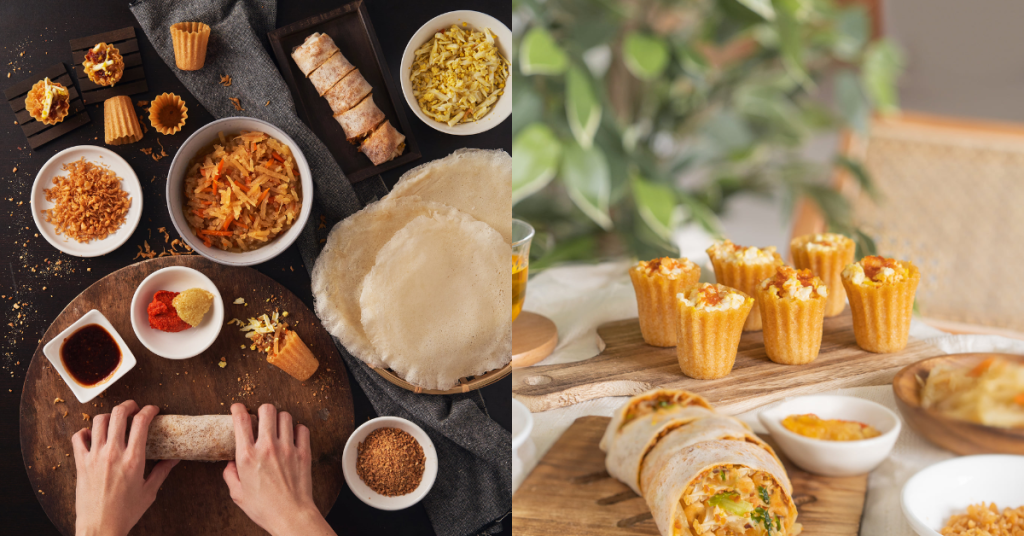
The team understands that every customer has their own preference, and that it may not be possible to satisfy everyone. Still, Ann Chin is determined to stand by their recipe as they continue to grow.
Rolling forward
Sustaining and growing Ann Chin is not without its challenges, though. Pamela cites rising material costs and rental rates as some of the toughest obstacles they’ve faced.
“The evolution of the food culture in Singapore also has been changing,” she added. “There are more trendy foods in the coming years, and we are also trying to keep up.”
To stay relevant, the Ann Chin team makes sure to stay abreast on customers’ preferences and cater to them. For one, there’s the customisable DIY sets that are suitable for vegans.
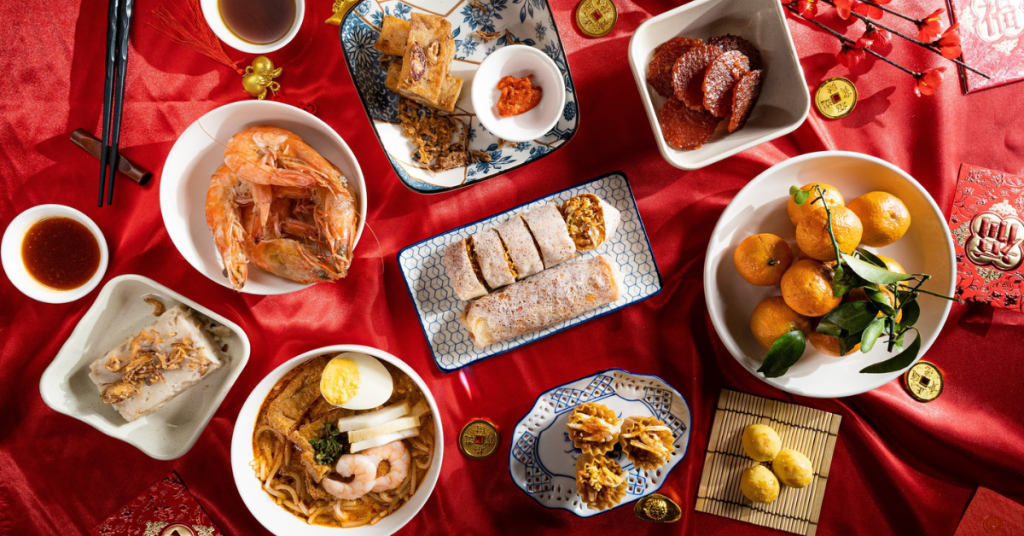
There’s also the prawn and chicken cutlet fillings available exclusively at Ann Chin’s outlets. Additionally, the chain has introduced new menu items such as the kueh pie tee.
Innovation is also done through behind-the-scenes efforts such as using omni-channel marketing solutions and tightening quality control standards.
Pamela shared that in 2023 alone, Ann Chin sold close to a million popiah rolls, a great feat that is helping the team achieve the brand’s vision of spotlighting and sustaining their traditional popiah skins.
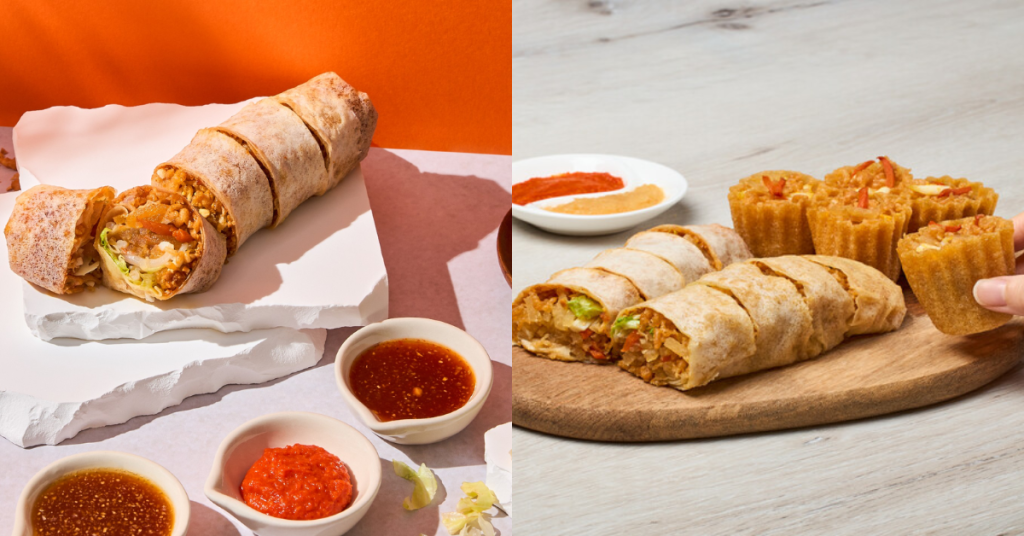
“Hand-making traditional popiah skin is a tough and labour-intensive skill that is losing its foothold in today’s society,” Pamela pointed out.
Going forward, she intends to continue expanding Ann Chin’s local presence. The focus now is to continue improving the quality and service across all outlets.
But in the bigger picture, Pamela has dreams of bringing bring her family’s legacy abroad, introducing the heritage of Singapore cuisine to other countries.
Also Read: Scientex is on a mission to prove that young M’sians can afford landed homes in urban areas
Featured Image Credit: Ann Chin Popiah
Balancing profit & impact, this 14 Y/O M’sian batik social enterprise isn’t done growing yet

If you tuned into the Budget 2024 tabling last October, you may have noticed Prime Minister Anwar Ibrahim carrying a rather eye-catching bag.
Featuring black leather and an interesting geometric pattern, it was supplied by a homegrown social enterprise named Batik Boutique.
According to Amy Blair, the founder of Batik Boutique, the Prime Minister’s office had contacted her directly to propose batik designs, keen on supporting Malaysian batik for a good cause.
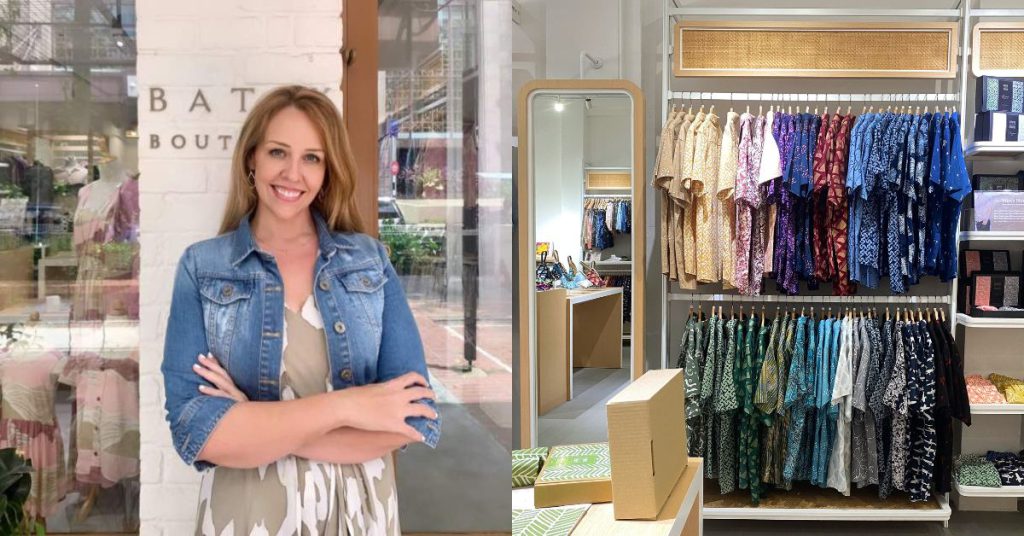
“We stopped what we were doing, and my team and I began to propose which artisan to work with,” Amy shared with us.
They chose to feature a third-generation batik artist from Kelantan, working with a local leather maker for other elements of the bag. The final result ended up plastered on many Malaysians’ screens on October 13, 2023.

“We started receiving inquiries afterwards if people could buy the bag,” Amy shared. The team has since made replicas of this “PMX Bag”, some using cheaper materials so people can afford it.
Even before this though, Batik Boutique had already made quite the name for itself. Founded in 2010, it’s a social enterprise that empowers artisans across Malaysia through skills training and economic opportunities.
It was also featured on Vulcan Post in the past. In 2017, to be exact. But it’s been nearly seven years, so here’s a look back at how Batik Boutique came to be.
Be the change you want to see
Originally from Texas, Amy has lived in Malaysia since 2007, having moved here to work in hospitality and tourism. Being in this field, she noticed there was a gap for a quality gift that was locally produced and “authentically Malaysian”.
“I thought someone should do something about that,” Amy mused. “Generally, though, that’s not usually me but someone else.”
Later, she befriended a woman, Ana, who lived in the PPR flats. She learnt about the women living there who couldn’t work traditional jobs because they had children to take care of.
As a new mum herself, she understood the struggle. That’s when she thought of merging her ideas for an authentic souvenir with her friend’s sewing skillset.
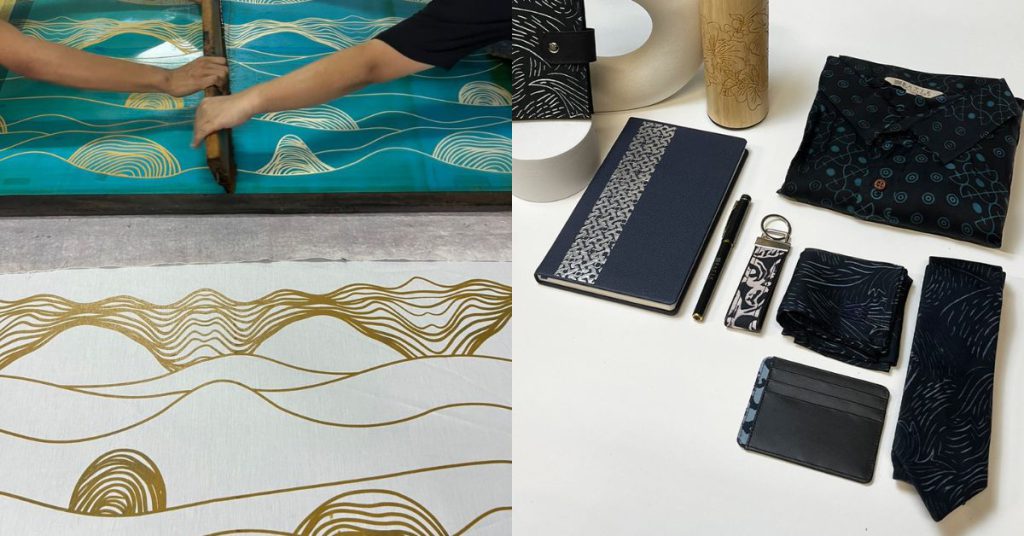
With that, Batik Boutique got its start in Amy’s own home. She told us, “I never intended at the time for it to grow into what it is today.”
Although Amy had experience in for-profit and not-for-profit businesses, this was a whole new challenge.
Yet, she persisted. “I understood hard work and I understood grit. I was raised in a family that was not well off. We had financial struggles, and I’ve worked since a very young age to support myself through university. For me, I was able to get out of the cycle, to break the cycle of poverty in my own life.”
Still, Amy looks like an unlikely person to be leading a batik-focused social enterprise. She said she often gets asked, “Kenapa matsalleh ni kena buat batik, kenapa kita tak boleh buat, as orang Melayu?”
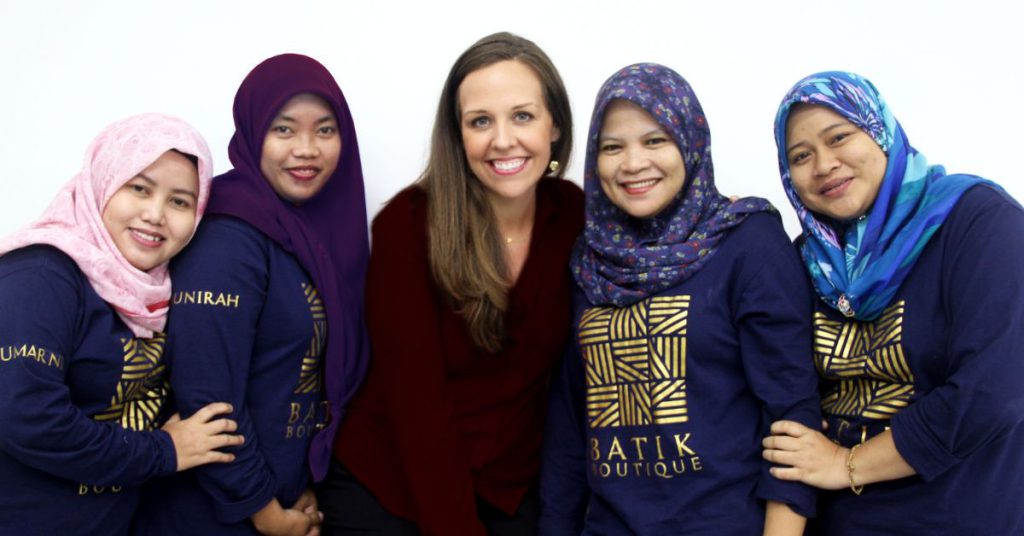
(Amy has quite the impeccable pronunciation, having put in the effort to learn the language.)
She generally laughs and agrees with the sentiment. But it’s not surprising that it takes an “outsider” to produce new ideas and solutions.
“If you came to Texas, maybe you would see and appreciate something I wouldn’t see inside,” she pointed out. “I do have advantages coming from another country to have a fresh perspective.”
Increase profits to increase impact
When Batik Boutique started, Amy was more focused on the charity part of things, but she has since realised that charity doesn’t keep a business running. Rather, it requires true entrepreneurship.
While Batik Boutique falls under the umbrella term of “social enterprise”, Amy clarified that their business model is set up to be what’s called an “inclusive business”.
That means Batik Boutique is intentionally set up to be a for-profit business that uses its value chain to uplift its beneficiaries. As the business expands, the impact expands.
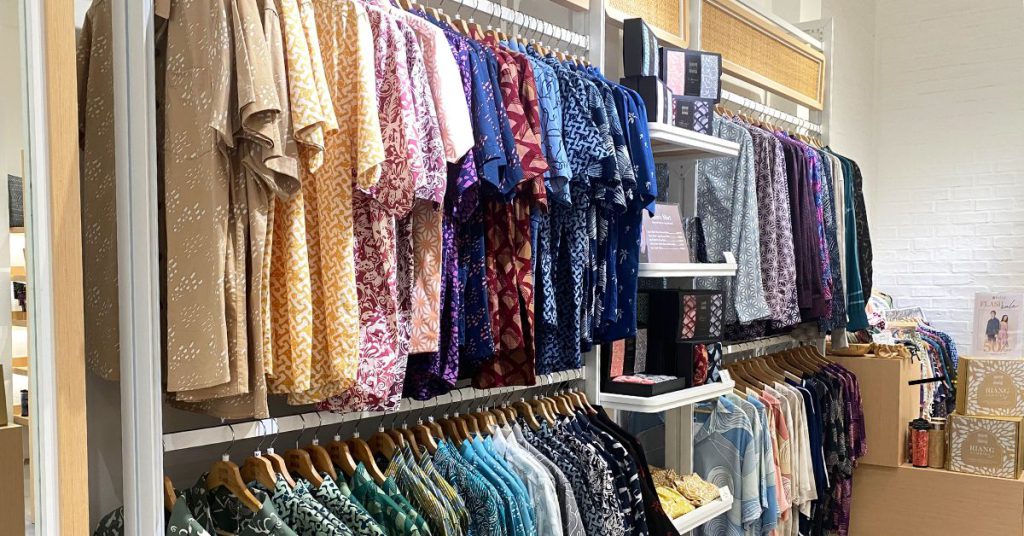
“Through that growth in me and my mindset, I’ve realised the best way to create impact is to grow the business,” she said.
With this goal, Amy has shifted her mindset to have more of a global vision for Batik Boutique. Instead of just focusing on women, she now wants to support artisans from all marginalised communities.
“I want to see Malaysian batik as a major player in the fashion industry globally and Batik Boutique is the way to do that,” she said.
And to put Malaysian batik on the map, she understands it will take families, communities, and more than one gender to do it. It’s like a cycle: Helping the local community contributes to business growth, and growing the business will ultimately increase impact for the community, too.
A growing landscape for social enterprises
While social enterprises have always existed, the term has become more of a buzzword as of late.
To Amy, this is not a bad thing at all. She credited this increased awareness to the generational shift in our thinking.
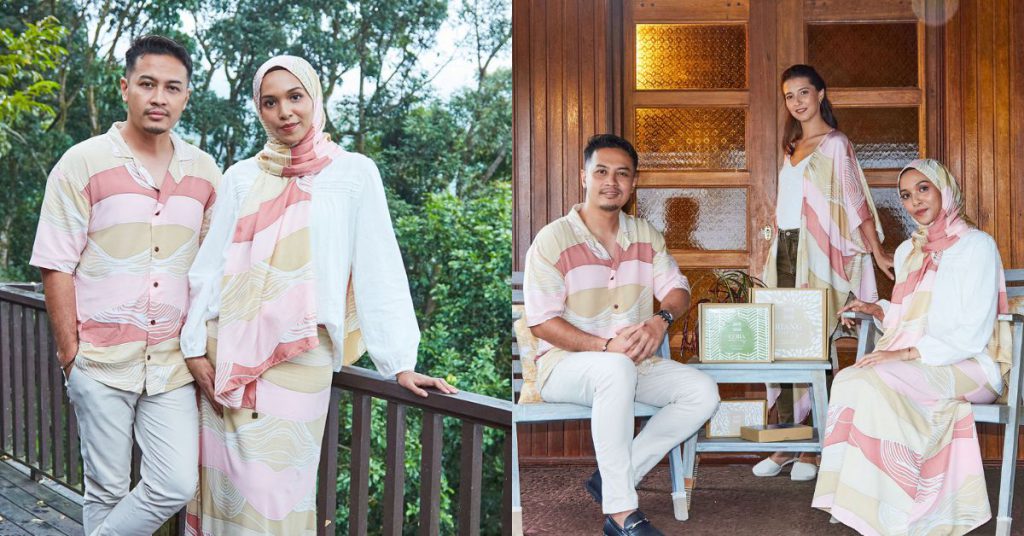
“I think we all realise we all have to work and we have to earn a wage, we have to live, but we also want to do things that matter to us, that have causes and are impactful at the same time,” she said.
But the increased number of social enterprises might mean increased competition. However, as Amy pointed out, it’s not easy running or leading a social enterprise, especially when you want to scale it.
“You need to understand how to solve problems in society or in an environment, and also how to run a business,” she explained.
There’s another layer of competition that Batik Boutique faces, though—the rise of batik brands.
To that, Amy has a message for consumers: “Make sure you understand what batik is.”
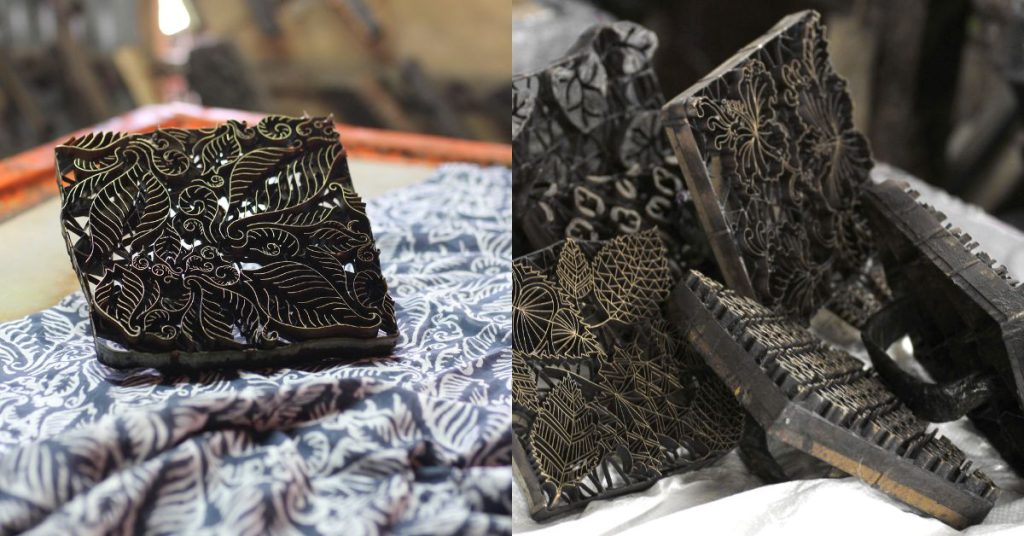
For the uninitiated, batik isn’t just a design. It’s a wax-resist dye method. Amy said that oftentimes, brands may claim to use batik, when it’s just using batik-inspired patterns manufactured via machines or screen printing.
While there’s nothing wrong with beautiful, batik-inspired items, Amy believes they don’t serve the heritage or the local community, and thinks that such brands should have the integrity to clarify that.
Leading a cause and a business
Today, Batik Boutique has grown to support 400 artisans across Malaysia, with 1,500 beneficiaries. Consistently, they employ about 100 people on a full-time basis.
Last year, the social enterprise became B Corp-certified. This is a global accreditation that can take years to achieve, as it looks at various aspects of a social enterprise, from how it treats its employees to environmental factors.
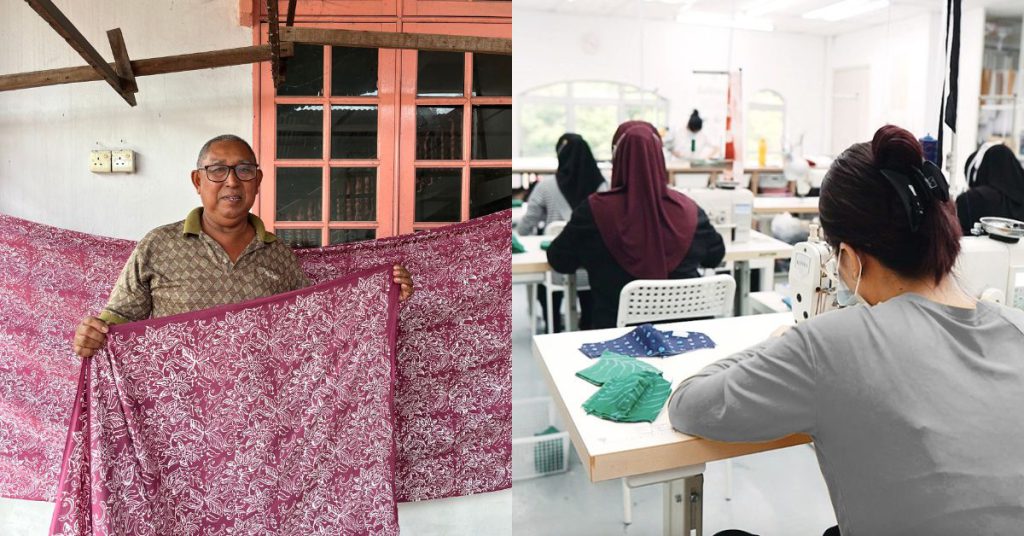
For 2024, the business will be opening a store in Mont Kiara as well as raising funds in order to expand their operations and, subsequently, impact.
All this will push them towards the long-term goal of putting Malaysia on the map for batik.
“My jalan may change, or my direction may change, but where I’m going doesn’t change,” Amy shared.
The journey won’t be easy, but that’s something she anticipates.
As a person who may seem “unqualified” to do what’s she’s doing through Batik Boutique, Amy often returns to one of her favourite quotes: “It’s only impossible until it’s done.”
- Learn more about Batik Boutique here.
- Read other articles we’ve written about Malaysian startups here.
Also Read: Sidec brought 5 M’sian ecommerce SMEs to Alibaba’s birthplace, here are their top takeaways
Featured Image Credit: Batik Boutique
GXBank has released Malaysia’s first debit card by a digital bank, is it worth getting?

Starting from January 2024, the Grab-powered digital bank GXBank started rolling out its very first physical card, the GX Card.
A debit card that’s linked to the GX Account, the GX Card can be used anywhere that takes Mastercard or MyDebit cards, and is also supported by the MEPS Shared ATM Network (SAN).
Like any usual credit or debit card, it is identified by a unique string of 16 numeric digits. The GX Card will have a five-year validity period upon card issuance, meaning if you get it this year, it’ll expire some time in 2029.
In terms of functionality, the GX Card looks pretty standard as far as cards go. So, what’s in it for people to sign up for it? Well, having been using it for a good week, here’s my review of the card, from applying for it to applying it in real-world use cases.
Easy application with nice perks
Applying for the GX Card is as easy as making a GXBank account and tapping on a little card icon once you set up your account. Given, it’s still being rolled out right now, so not everyone will get to enjoy this card just yet.
As for eligibility, applicants must:
- Be Malaysian citizens with a valid MyKad and residing in Malaysia
- Be aged 18 and above
- Have an active GX Account
If you fulfil those criteria, getting your card is seriously easy. I immediately was given access to the virtual card, though I only received the physical card about a week afterwards.

Ease of usage aside, some of the great perks of the GX Card include the fact that there’s no minimum account balance required to maintain the card. So if you forget to top up your GX Account, there’s absolutely no worry.
On top of that, GX Card is offering users 1% cashback on transactions with no cap from now until November 5, 2024. Some types of transactions are not eligible for the cashback, though, including:
- Cash withdrawals
- E-wallet top-up transactions
- Insurance or Takaful transactions
- Payments made to charity bodies
- Government transactions
- Gambling-related transactions
- Payments made to quasi-cash merchants (crypto, forex, etc.)
- Void transactions
Frequent Jaya Grocer shoppers will be happy to learn that GX Card offers 1.5x GrabRewards Points if you use the card at the grocery store. Just keep in mind that you have to flash the Jaya Grocer member barcode in Grab app at the cashier before you pay, or you won’t get any points.
Sadly, this perk is not inclusive of online Jaya Grocer orders.
Another great perk is that there are virtually no bank fees right now. That includes no new card (or even replacement) issuance fees or annual card fees.
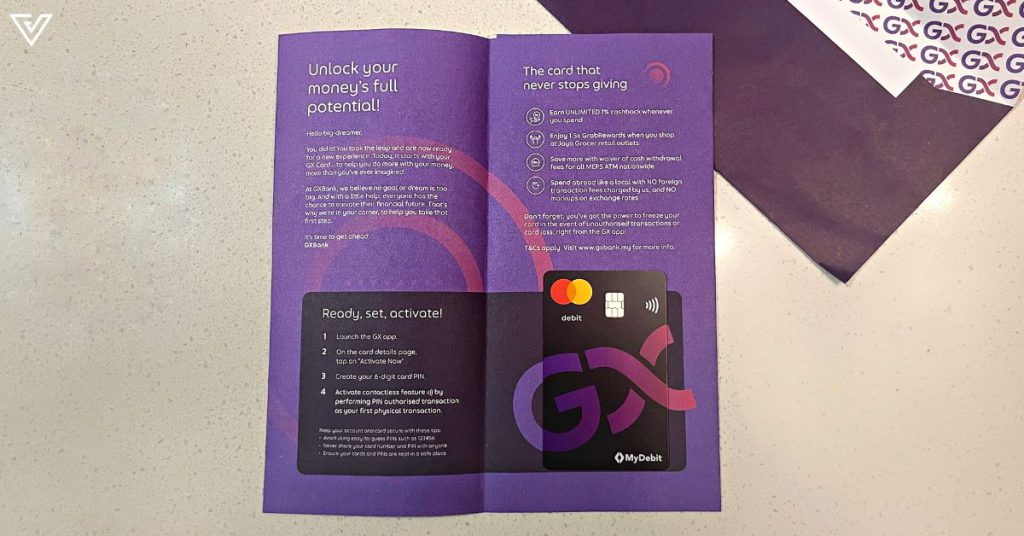
Using it at any ATM via the MEPS SAN is also free. There will be a RM1 MEPS fee posted on the customer’s account, but it’ll be waived immediately. There are also no fees for overseas cash withdrawals using ATMs via Mastercard.
Just keep in mind that the waive is set to last until the end of this year (December 31, 2024).
No worries for customer service
So, after applying for my GX Card, I began waiting for my mail. No joke, I checked my mailbox every day. It was supposed to arrive on January 25, but considering that it was Thaipusam, I gave it a bit more time.
If you’re wondering why I couldn’t just start using the “virtual card”, well, it only works for online transactions. It doesn’t function as an NFC card like I wrongly assumed it would. Plus, GXBank hasn’t allowed users to add the card to their online wallets such as Samsung Pay, Google Pay, or Apple Wallet just yet.
When the card didn’t arrive by Friday night, I decided to shoot the customer service a message on the GXBank app. It was 10:30PM so I was pleasantly surprised when I got in touch with a human representative immediately.
Raaj, the customer service representative, informed me that there were some delays in sending out the card, and that I should receive it the following week. Lo and behold, come Monday, I got a special little delivery in my mailbox.
Putting it to the test
In terms of the build of the card, I would say it’s slightly thinner compared to my other cards. While this does mean it has a flimsier feel to it, it may be a plus for those who like to keep their wallets slim.
That aside, the card has a holographic sheen to it that makes me feel very cool when using it. It’s also vertical as opposed to horizontal, which I found unique. (Basically, every time I use it, I half-expect to get a compliment from the cashier. No luck so far.)
Once you receive the physical card, you simply have to activate it in the app.
For card maintenance, the GXBank app has it all covered in a very intuitive manner. In the app’s card page, you can view card details, freeze or unfreeze your card, enable or disable online transactions, enable or disable overseas transactions, change your card PIN or limit, or fully cancel your card.

Using it for the first time, you will have to input your PIN, but subsequent transactions can be done via Paywave.
I’ve used it for quite the number of purchases thus far. For one, I like how it allows me to budget my spending since it’s tied to my GX Account, which doesn’t have that much money in there.
The cashback does seem to take a bit of time to be deposited. Checking the details again, I learnt that the cashback will be credited to your account by the end of the next day from the posting date of the transaction.
When my cashback was credited, the bank sent me not one, not two, not even three, but six whole notifications and emails (meaning I got 12 pings altogether on my phone) for a RM0.40 cashback. Not six RM0.40 cashbacks, but one.

For a moment I was genuinely worried it was stuck in a loop and I would be receiving notifications from GXBank forever.
This is really perplexing, and the only answer I have is that perhaps the cashback correlates to six total transactions. I’m really hoping this gets resolved soon.
In other news, I also found out that the 1% cashback value will be calculated and rounded down to the nearest two decimal points, so keep that in mind.
The cashback amount also needs to be at least RM0.01 to be eligible to be credited to your GX Account. All that means is the payment needs to be at least RM1.
Waiting for greater accessibility
Once upon a time, I was a person who swore by using cash only. But as the times changed, so have I. Not only am I usually cashless, I’m actually cardless too.
At times, all I have on me when I go out for lunch is just my phone. After all, many of the places I visit take QR payments. And if I need to use my card, I already have it on my Apple Wallet.
So, as much as I have enjoyed the GX Card and the novelty of having a new physical card to add to my wallet, I am very much looking forward to more developments with GXBank.
In any case, though, I do think it’s worth applying for the card, as there’s really nothing to lose. Plus, isn’t it a good idea to get the card while the perks last?
Also Read: Fee for using DuitNow QR? Here’s what the merchant discount rate means for merchants & users.
These M’sians started by selling finger foods, now it’s a 13 Y/O halal catering business
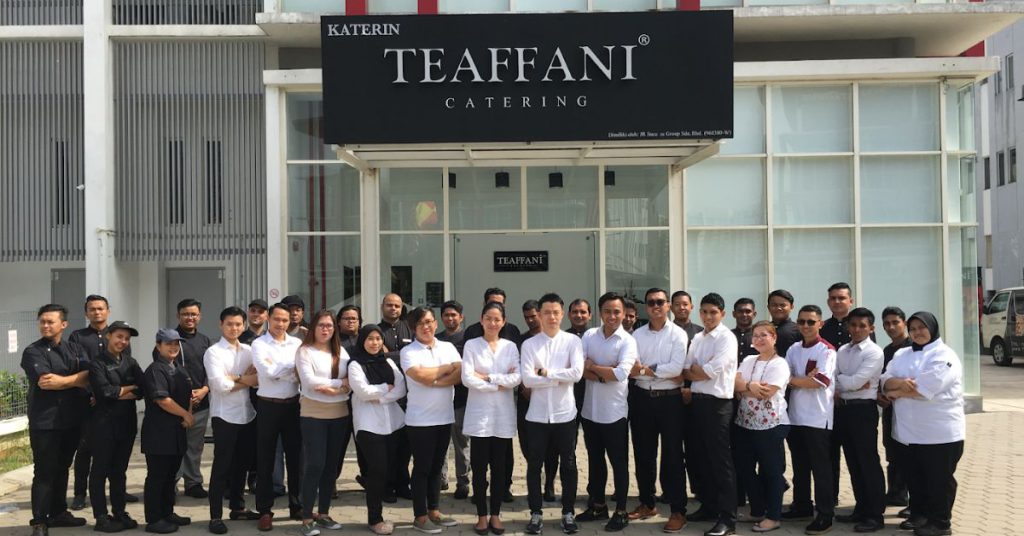
With Malaysia being a nation of foodies, it’s not surprising that catering businesses are a dime a dozen.
However, ones that are JAKIM halal-certified (not just using halal ingredients and suppliers) make up a smaller subset.
Ones that have been able to sustain it for over 10 years and scale the business across other sectors such as cafeteria and clubhouse management are fewer yet.
But one business that has been able to do all that is Teaffani Catering (Teaffani).
From finger foods to full meals
Founded in 2011, the business was established by Rachael and Jerome. The former has a background in advertising and marketing, while the latter came from banking.
In the early days, the duo started by providing high-tea services, focusing on offering finger foods and canapes.
The founders shared that at the time, there weren’t a lot of high tea options yet, so they thought the concept was interesting. And since the capital needed for catering is typically less compared to opening a retail store, they went that route.

The business was very much bootstrapped in its early years, with Rachael and Jerome handling most things by themselves.
“At that time, we were just using my own house to store all the equipment,” Rachael recalled. “We didn’t have manpower or overhead, and we were using our own vehicles.”
Leveraging their networks and skillsets, the two managed to grow their customer base. In time, these customers began requesting for heavier dishes such as fried rice, mee hoon, and more. Not ones to ignore demand, the duo decided to tap into that market.
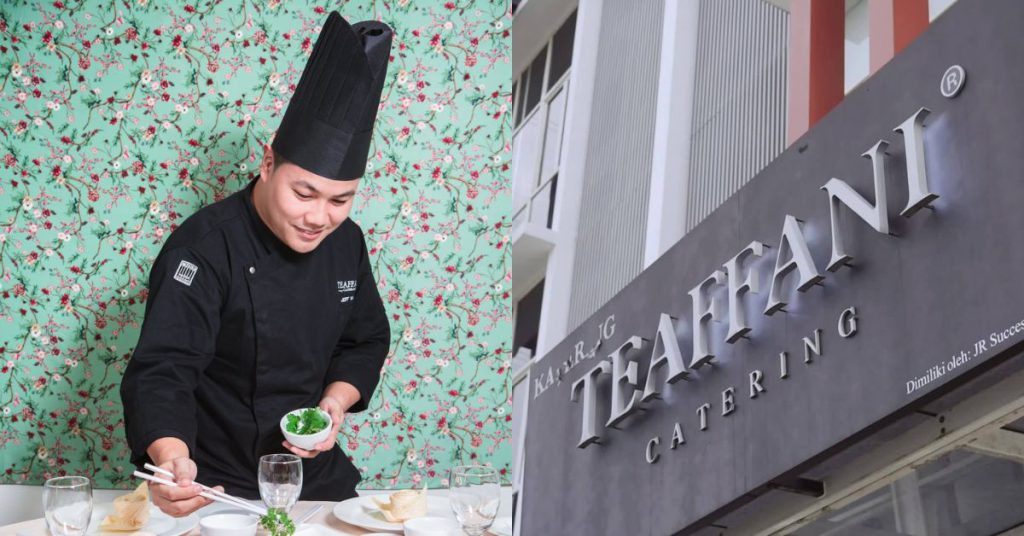
Initially, they would just buy from restaurants, but they quickly learnt that cost was too high, so they hired an inhouse chef. This not only reduced costs, but also improved quality control. From there, things kept on growing.
Today, the team has over 50 full-timers, as well as a number of part-time staff on duty.
Looking at the big picture, it may seem like Teaffani has changed a lot over the years.
To that, Rachael shared that it’s the result of cumulative efforts. “We are taking small steps at a time. We keep improving little things on each aspect of our business from staff training to our food menu. It’s many small changes over the years, instead of a big one.”
Halal for all
In 2018, Teaffani successfully got its JAKIM halal certification. Rachael explained that wanting to get certified is natural for a Malaysian business that wants to serve everyone.
“Halal certification is good in the sense that it not only emphasises on the halal part, but it also gives us very good guidelines on cleanliness,” she elaborated.
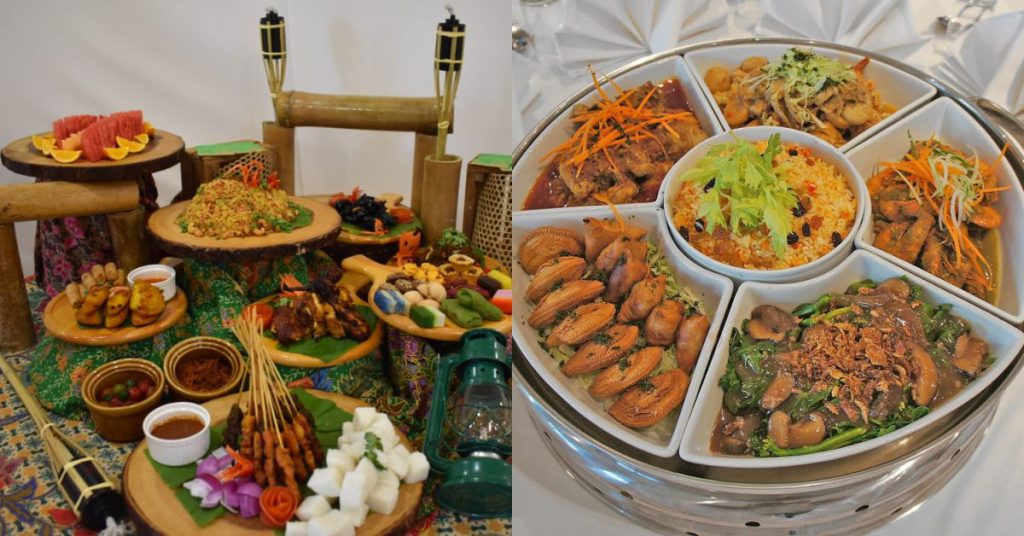
To begin with, Teaffani was already offering non-pork services anyway. But the official certification would bring them to the next level, allowing the business to cater to corporate clients, government bodies, and more.
We’ve heard that acquiring a halal certification can be challenging, but Rachael revealed that it wasn’t hard at all for them. They simply followed all the necessary criteria, such as having an inhouse halal executive, among others.
“I don’t think it’s challenging,” she assured. “The only thing is if the facilities may be not on par, or certain ingredients are hard to get certified, however if you prepare the facilities according to the requirement and follow the halal process, it’s not that hard.”
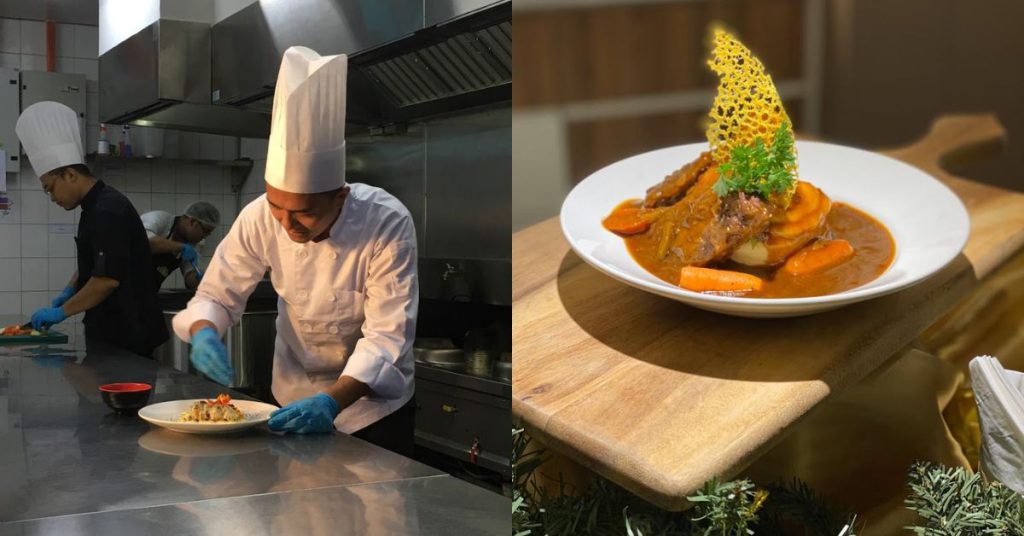
For F&B businesses that may be struggling, the co-founder suggests reaching out to halal consultants who know the ins and outs of the process.
Exploring new verticals
Through referrals from other clients, Teaffani went on to receive inquiries to manage clubhouses, cafeterias, and even hotel kitchens.
Just like how they originally pivoted from finger meals to full-fledged catering, the business saw the market demand and took on the challenge. But soon, they faced a steep learning curve.
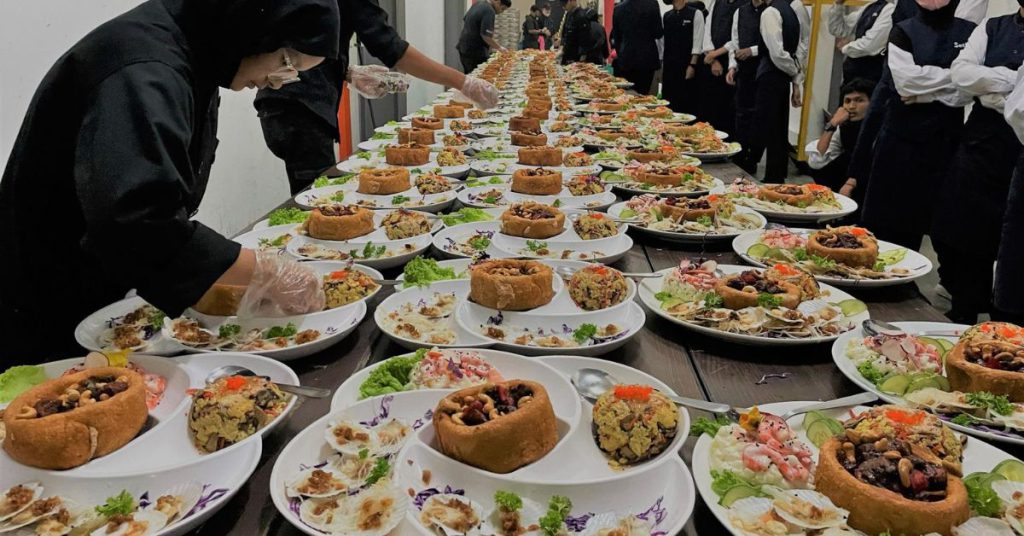
Unlike catering services where you’ll have a head count, you won’t know how many will actually eat your food at a clubhouse or cafeteria. They’re more like a retail business than food service, Rachael shared.
There are also things such as wastage management, payment systems, variety of food, and other customer service-related matters to consider.
“It’s totally two different types of business models,” Rachael shared. “We definitely learnt through the hard way.”
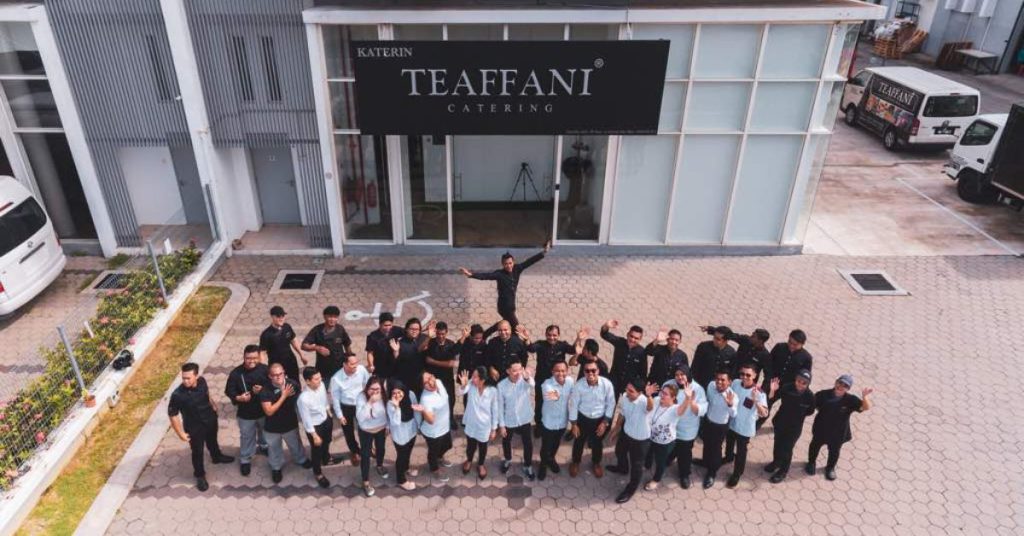
But they persevered, and today, they are the official caterer for Malaysian Philharmonic Orchestra.
Considering that the team has experience in running F&B operations as well as producing quality food, it seems natural that opening their own Teaffani restaurant might be the next step.
To that, Rachael said that they indeed have the know-how, and may consider launching such a business in the future.
While that idea appears to still be quite up in the air, one thing is for certain—Teaffani aims to keep on improving into order to cater (pun intended) to their customers.
“In order to sustain the business, we cannot do things based on what we think is right,” Rachael shared. “We have to understand the trends so we can continue to be on top of our game, and stand out from competitors.”
- Learn more about Teaffani Catering here.
- Read other articles we’ve written about Malaysian startups here.
Also Read: Slim Doc & Jack Lim paired up to highlight safe and healthy weight loss for a better 2024
Featured Image Credit: Teaffani Catering
Here’s how these Klang cousins revived their family’s tailoring biz from 1990
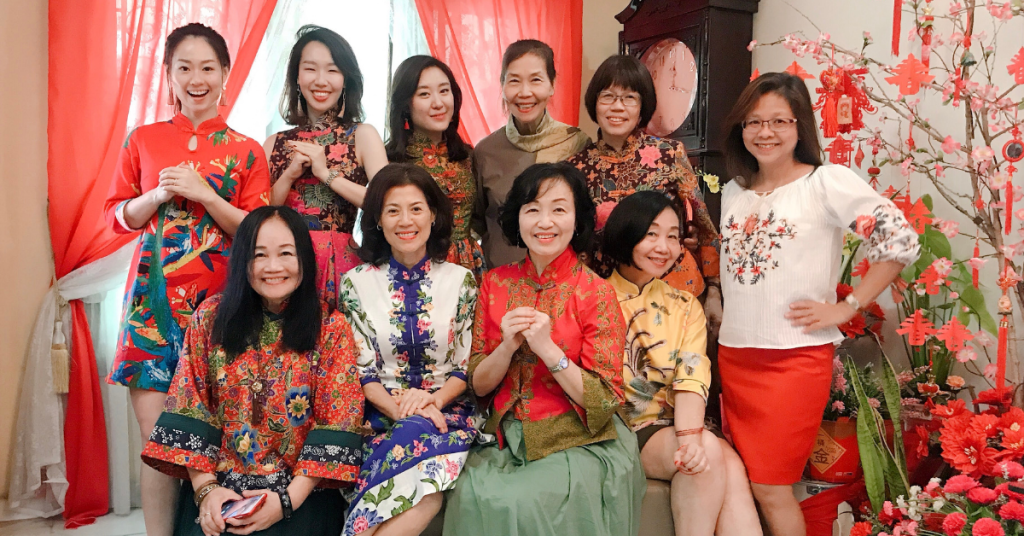
Every family has their own traditions during the holidays, regardless of which festivity you’re celebrating.
Some have the tradition of binge-watching Christmas movies together or baking kuih raya with neighbours at the local community centre. Others take this time to practice more traditional cultural customs, like lighting diya lamps during the festival of lights.
For Soong Xin Ee and her Klang-based family, it’s having tailored custom batik dresses made to ring in every Chinese New Year. It’s a privilege that the ladies in her family gained from having three seamstress aunts.

That’s how the idea for Gérson Batik started. But of course, that’s just the short version.
Bringing new life to an old venture
You see, the Gérson brand itself had already been established back in 1990. All three of Xin Ee’s aunts (Wong Soo Ha, Wong Soo Me, and Wong Soo Ling) worked together at the custom tailoring shop providing customers with their skillful services.
As they began having families of their own and children entered the picture, they decided to close Gérson down, all in the name of maternal love.
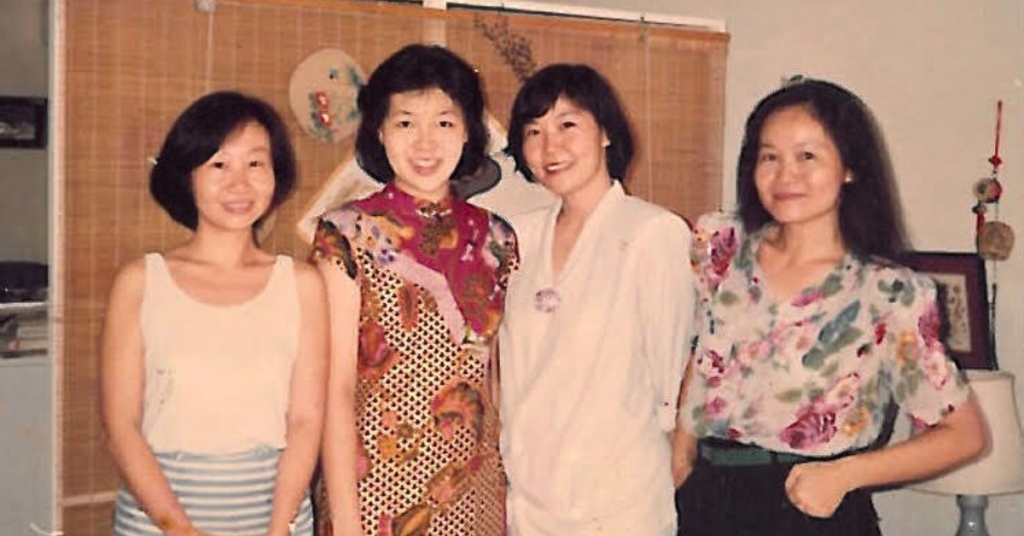
That passion for tailoring never really disappeared, though, as is evident from their annual Chinese New Year tradition.
Being all grown up now, Xin Ee and her three cousins wanted to help them restart this family business and digitalise it.
It’s a familiar family affair
“How we started was with four cousins,” Xin Ee said, referring to herself, TziLi, Jamie, and Kelly. “We saw our aunts’ perfect workmanship and wanted to help them earn a living [again].”
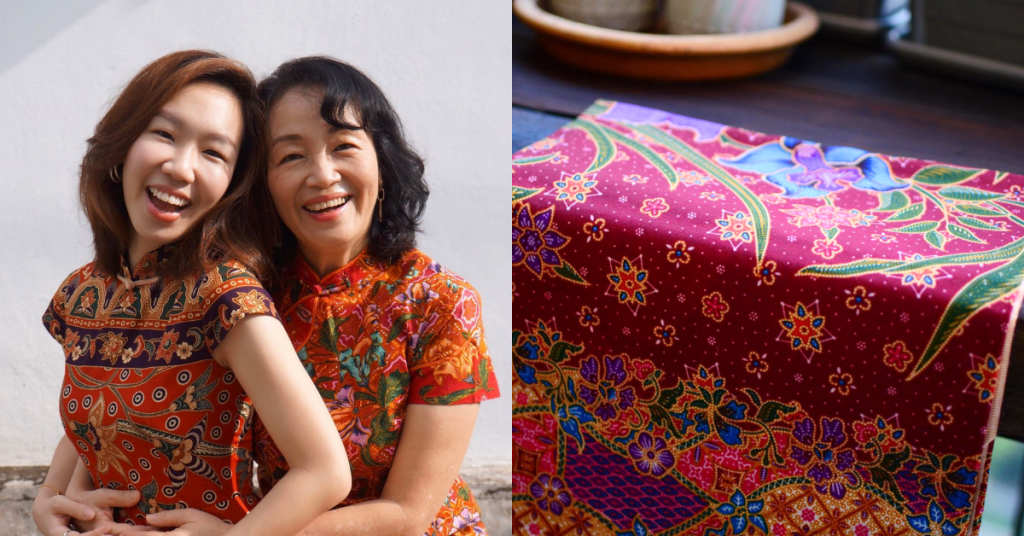
Thus, a revamped store called Gérson Batik was launched online in 2020, 30 years after Gérson’s initial start.
Sticking with the inspiration, Gérson Batik prides itself on its made-to-measure services. This means that each piece is uniquely designed and sewn to your preferences.
Wong Man May, Xin Ee’s mum, helps out by hand-selecting the batik fabrics from local producers as she has a good eye for it. “The fabrics that she picks, she can imagine it on every design and piece. It runs in the family to have good sights [in fashion],” Xin Ee shared.

Once that’s done and measurements are made, Xin Ee’s three aunts take the lead with their seamstress skills, with Wong Soo Ha acting as the head designer. It usually takes them up to three months on average to craft each custom order.
Customers can choose from a slew of attire choices, including batik tops, skirts, dresses, and shirts. They can be purchased either through the brand’s Instagram page or their website, with prices starting from RM228.
Eat, sleep, sew, repeat

It was quite a challenge starting out with the pandemic still fresh. Utilising the skills they had on hand, Xin Ee and her three cousins turned to online marketing for the brand.
This was supported by Xin Ee’s own experience in ecommerce, TziLi as the creative branding designer, Jamie as the customer specialist who helped out with order enquiries, and Kelly as the person managing the finances.
And slowly, they managed to build up a steady customer base. Much of this is credited to all of them living under the same roof back then, which eased communication.
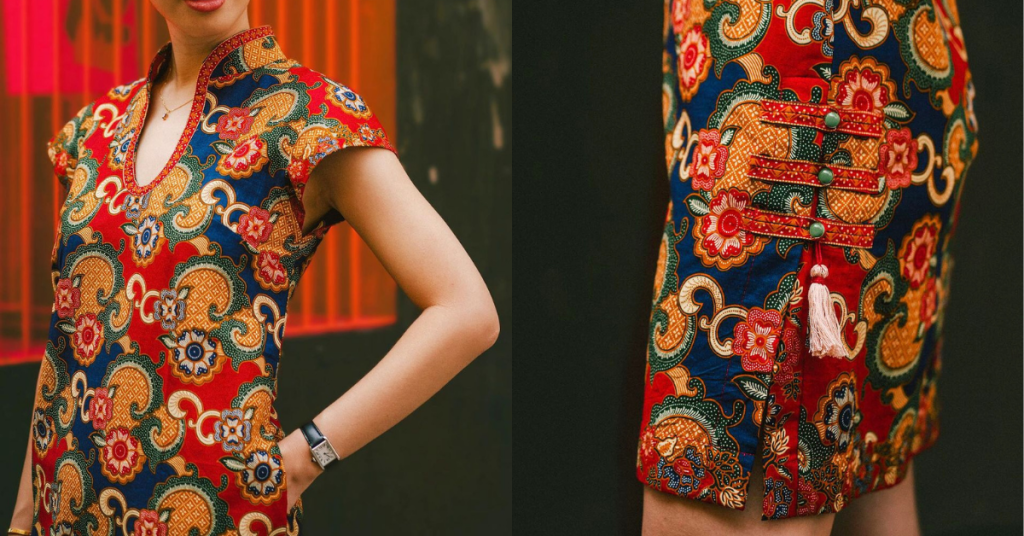
As for how they’ve maintained family relationships despite being in business together, Xin Ee shared that they have three practices:
- Having a clear vision for the brand and ensuring that everyone knows the direction
- Trusting everyone to hold their own weight and not micromanaging
- Ensuring that everyone really understands their roles and responsibilities
Speaking on her own experience, Xin Ee expressed, “It was definitely tough, a lot of sweat and tears especially [since] I am younger than my aunts and don’t have any [tailoring] experience. But it guided me to have more patience and things are so much better now.”
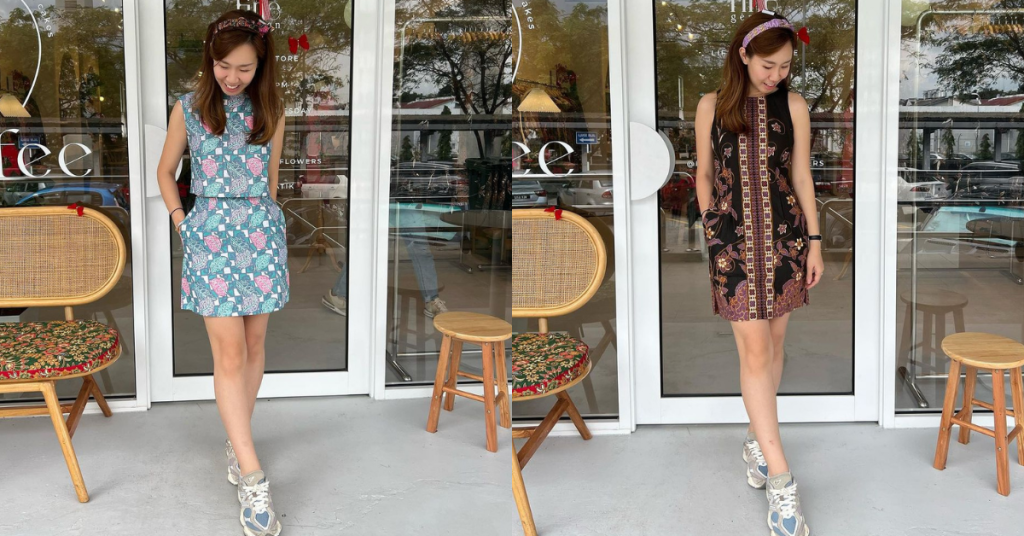
At the time of writing, the other three cousins have all left Malaysia to explore new horizons abroad, leaving Xin Ee to grow the family legacy at home while juggling her own full-time career in ecommerce.
Putting in the needlework
It’s been about three years since Gérson Batik restarted and the brand recently launched its first physical store in Subang. This new brand expansion also came with a wider catalogue.
Instead of just custom-made attire, you can now find readymade pieces to choose off the rack. They’ve also included newer items like neckties and pocket squares for men, and batik shirts that come in matching family sets.
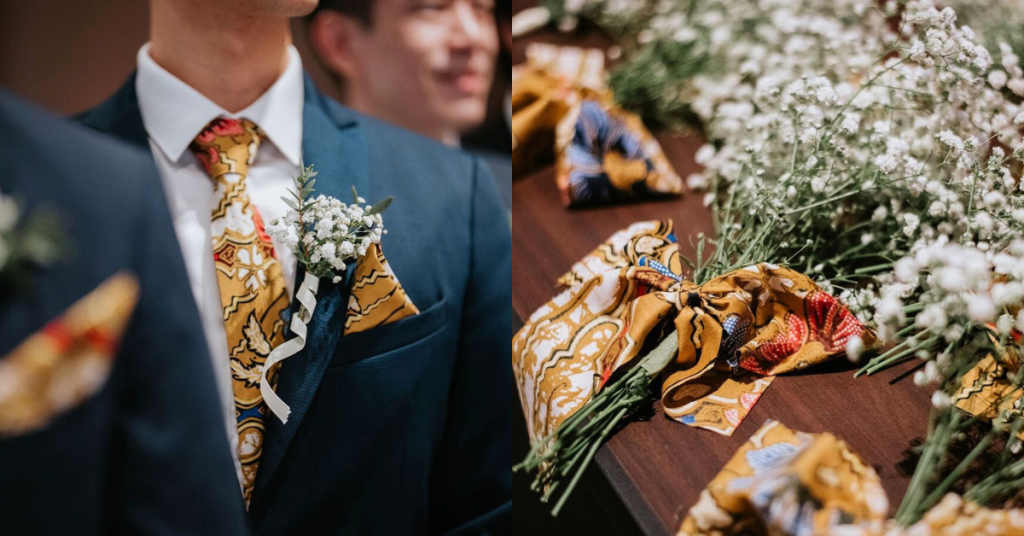
And the response has been “overwhelmingly positive”.
“We had to close off our website for a moment due to the fast in-and-out flow of our readymade pieces. We couldn’t cope with the demand, it was more than what we had forecasted,” Xin Ee shared.
Realising that there is still a huge pool of customers who prefer to grab and go, the brand is looking to create more readymade solutions to meet the demands.
Initially, the idea for Gérson Batik was to target those aged between 24 to 28, as the family hoped their modern designs would attract younger crowds. But after their physical store opening, they found that the real audience is slightly older than that, ranging between 28 to 35 years old.

“We realised more and more people value modernised batik. Customers also mentioned that batik brings sentimental value to them as it reminds them of their elderly, yet they can wear it in a modern way,” Xin Ee explained.
With that in mind, the brand seeks to add a more personal touch to the batik fabric itself. They’re looking to partner with local makers to create their own batik prints soon.
As for the bigger and more ambitious goal, Xin Ee and her family want to take the brand international. But not at the expense of losing their identity.
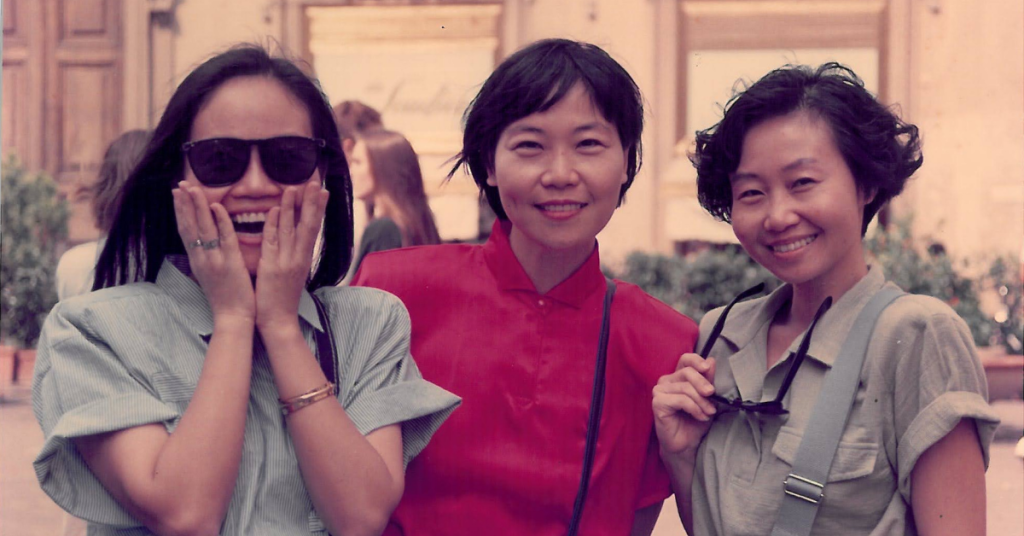
“We are still tailoring every piece with love and not looking to pass this role on to others yet.” Gérson Batik is all about quality over quantity, a philosophy that her aunts, the Wong sisters, have valued in their line of work for many years and more to come.
- Learn more about Gérson Batik here.
- Read other articles we’ve written about Malaysian startups here.
Also Read: Scientex is on a mission to prove that young M’sians can afford landed homes in urban areas
Featured Image Credit: Gérson Batik
Legacy in bloom: Far East Flora’s 2nd gen owner on growing the biz with an 11-storey floral haven
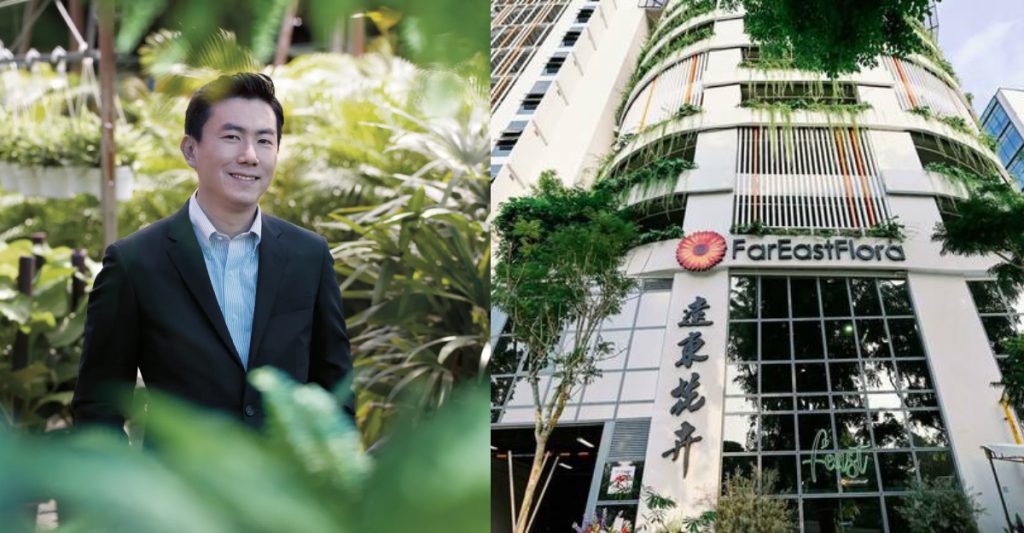
On September 29 last year, Far East Flora opened an 11-storey floral-themed shopping mall at Clementi. The mall, called the Far East Flora Centre, sells over 1,000 types of flowers and more than 500 plants, alongside a suite of gardening products and home decor items.
Beyond your typical plant nursery, the one-of-a-kind centre boasts a wholesale fresh market where you can shop for fruits, groceries and pet food, among other products, an on-site florist for personalised bouquets and gifts, as well as a garden cafe, F’ east.
The launch of Far East Flora Centre marks a new milestone for the business, which has established its presence beyond Singapore in Malaysia and Hong Kong, offering over 1,000 products that can be shipped to over 140 countries worldwide.
Behind this successful florist chain is 43-year-old Peter Cheok, the second-generation owner and Assistant Group MD of Far East Flora Holdings, who shared the business’ 59-year-old journey in this interview.
Far East Flora was established in 1965
Far East Flora was founded by Peter’s father, Danny Cheok, and his two brothers whom initially started off by selling fresh flowers and eggs across Singapore from a small van, before formally establishing the business in 1965.
The company then rose to become a wholesaler of fresh-cut flowers, subsequently opening its first flowers and gifts retail store at Bukit Timah Plaza in 1978.
Since then, Far East Flora has seen rapid growth and has opened various retail locations across Singapore.
In addition to its brick and mortar expansion, the company has ventured into the digital realm with the launch of its e-commerce arm, FarEastFlora.com, which was spearheaded by Peter’s cousin, Ryan Chioh, in 2001.
In the B2B space, the company’s subsidiary, OneO2Plants, where Peter serves as its Managing Director, offers plant rentals, floral design and festive decor services, among others, for its corporate clients.
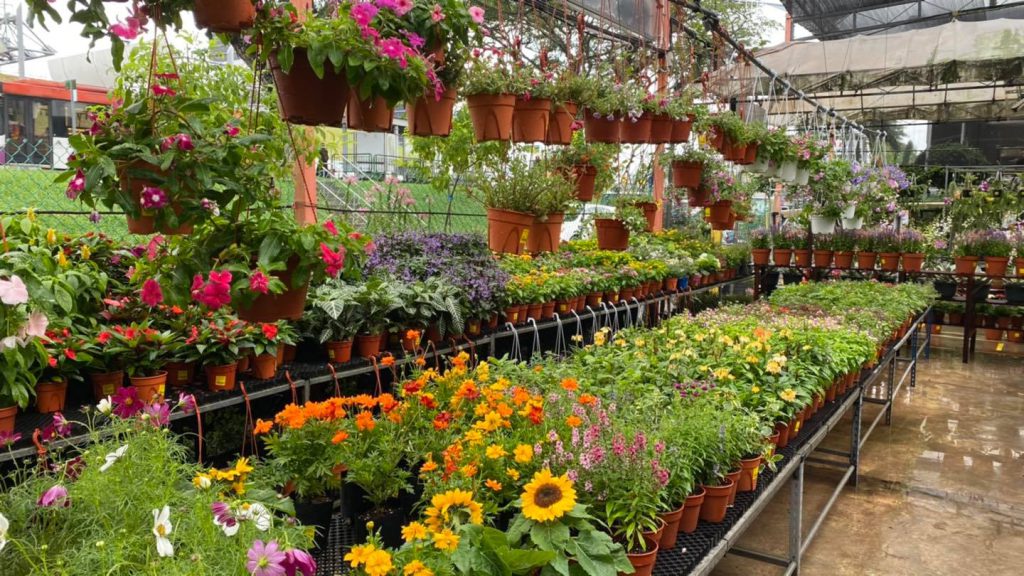
Peter first joined the family business in 2002, where he was put in charge of Far East Flora’s marketing portfolio. He designed posters and uniforms for staff, while also managing ad agencies and the media.
While he initially intended to start his career in consulting with an information systems and business degree from Indiana University, the “cool economic climate” and his affinity for plants drove him to join his family business instead.
Growing up surrounded by the business and having spent my teenage years caring for plants and assisting customers, it just felt like a natural progression for me.
– Peter Cheok, Assistant Group MD, Far East Flora, and MD, OneO2Plants
Tech is at the core of Far East Flora’s business
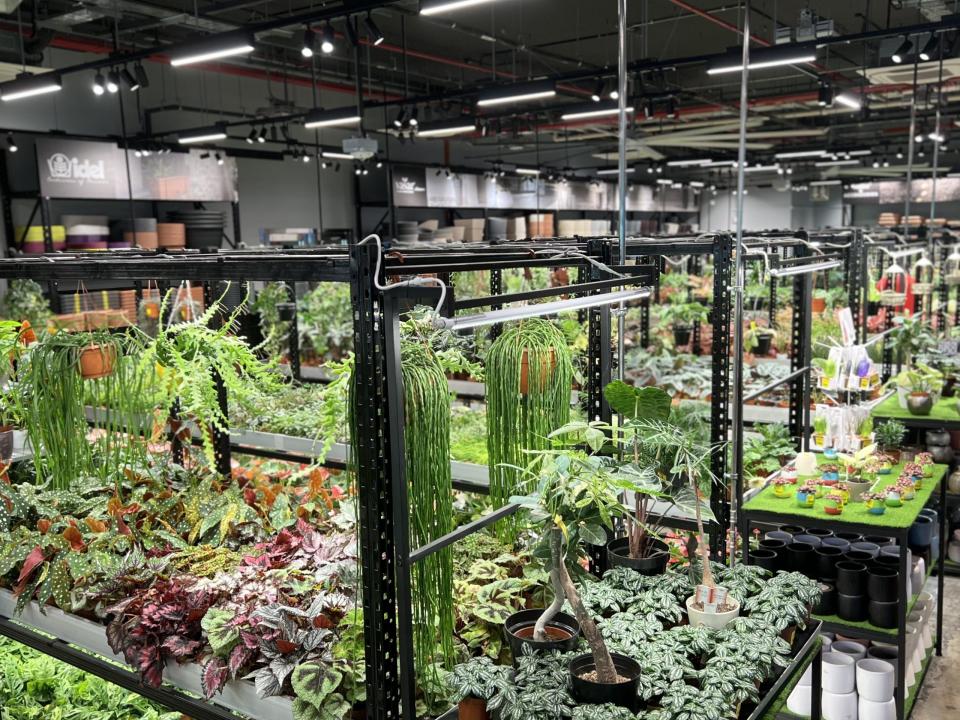
To keep a competitive edge in the ever-evolving business landscape, Far East Flora realised early on that it should digitalise its business model.
“Keeping up with the digital and business landscape had us investing heavily in technology systems and equipment, while also training our team to upskill and embrace these digital changes at the same time,” Peter shared.
Even to this day, the company continues to adopt newer and more advanced technologies to enhance its operations, allowing it to achieve savings by as much as 80 per cent in labour.
For instance, Far East Flora pioneered the adoption of a self-irrigation system within the industry, reducing the need for manual labor in plant watering. The company also claims to be the first in the industry to implement self checkout systems to not only enhance the overall customer experience, but to also further cut back on the manpower required for its retail operations.
On the backend, Far East Flora has incorporated enterprise resource planning systems to centralise its data management and streamline internal processes.

This strategy also ensured Far East Flora’s survival during the COVID-19 pandemic. During the lockdown, all of its retail stores were shut down for a two-month-long period, bringing its incoming revenue from these six stores to a standstill.
At the same time, the company also battled with manpower and supply chain disruptions, further exacerbating the already challenging situation.
However, by swiftly adapting and redirecting its focus solely to its online business, Far East Flora not only managed to weather the storm but also achieve remarkable results.
In 2020, the company achieved an impressive 300 per cent year-on-year growth in online sales for its garden and wholesale businesses, mitigating the revenue loss from the temporarily shuttered physical stores.
Providing a “one-stop integrated experience to garden and flower shopping”
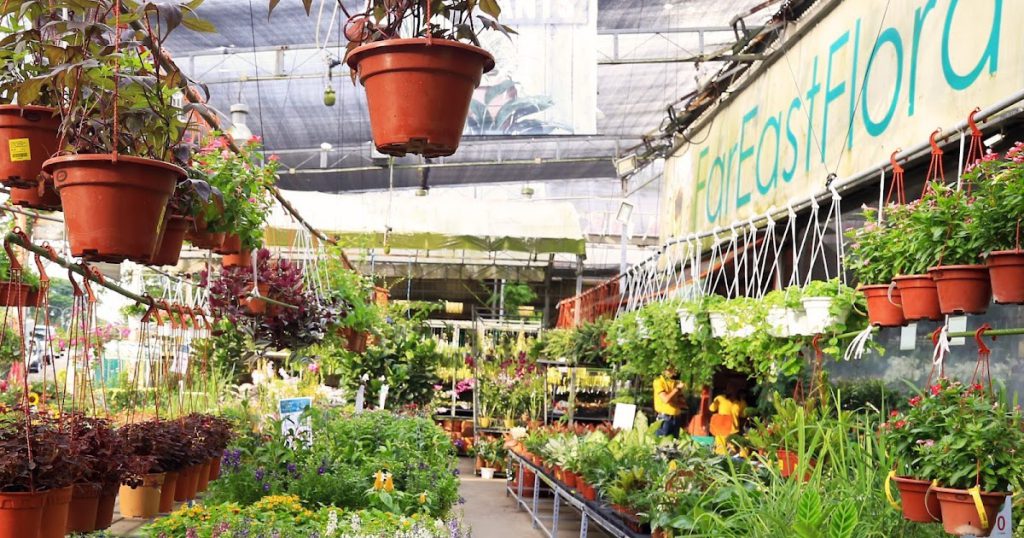
But that’s not to say that the COVID-19 pandemic merely ushered in challenges to businesses like Far East Flora. Reflecting on the transformation of the floral industry since the lockdowns, Peter observed a renewed interest in gardening, as more people turned to cultivating plants and flowers at home.
“It’s a small industry, and the renewed interest caused by COVID-19 saw many small boutiques and hobbyists pop up in Singapore,” he shared. To maintain a competitive edge, the company constantly “innovates its offerings and plant range”, while staying on top of the latest gardening trends.
This was what led to the launch of the Far East Flora Centre at Clementi back in September. With this new venture, the business aims to provide a “one-stop integrated experience to garden and flower shopping” in Singapore.
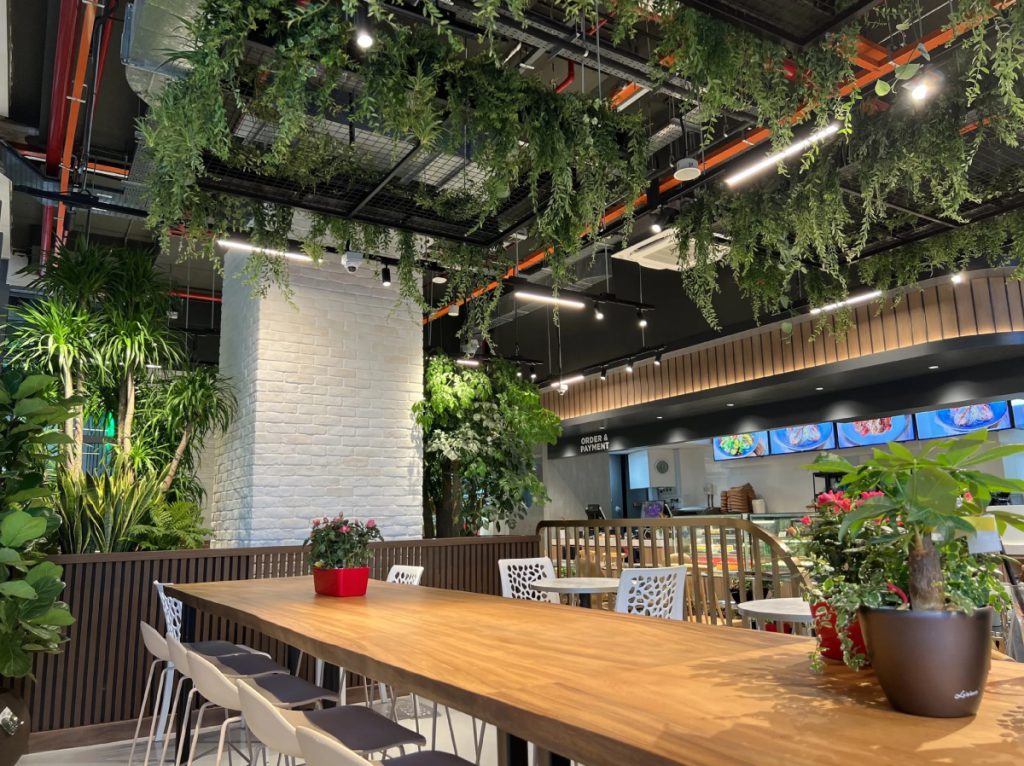
As the brand continues to grow, Peter emphasised its commitment to cultivating a broader community of gardening enthusiasts in Singapore.
“We strive to get more people involved in this gardening passion through shared experiences at our stores and a community of workshops for them to get their hands dirty to learn through fun.”
Looking forward, the brand aspires to be the trusted, go-to home brand for all things floriculture related.
We aim to transform the way people view a traditional garden centre by creating pockets of spaces for our guests to engage with nature, find inspiration for their green spaces, and to discover the joys of gardening at Far East Flora.
– Peter Cheok, Assistant Group MD, Far East Flora, and MD, OneO2Plants
Embark on your startup journey with MAS-regulated ANEXT Bank, one of Singapore’s first digital banks for SMEs.
Featured Image Credit: Far East Flora/ Prestige
Also Read: Flower Power: How OG Florist FarEastFlora.com Stayed A Blooming Business Even After 53 Years